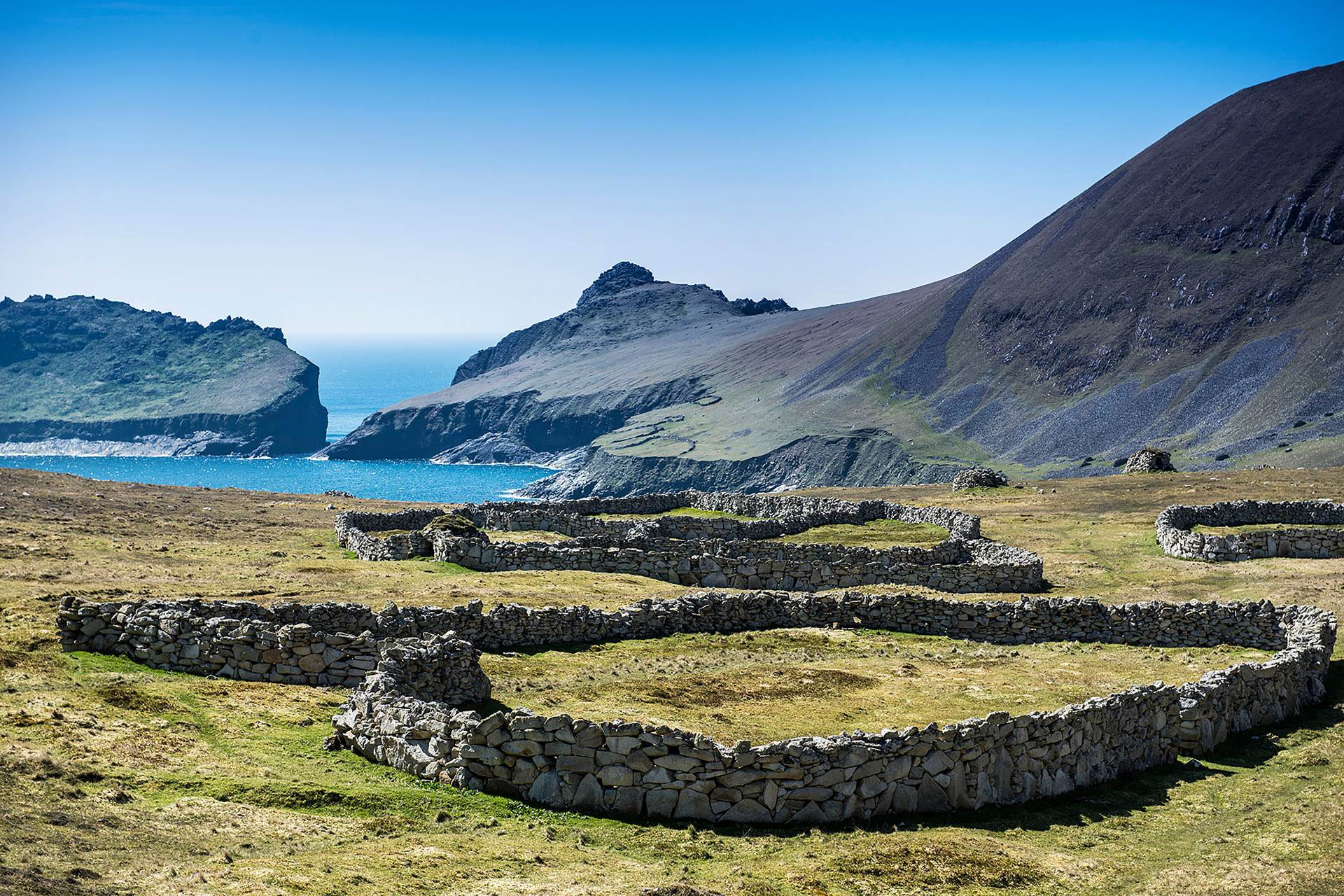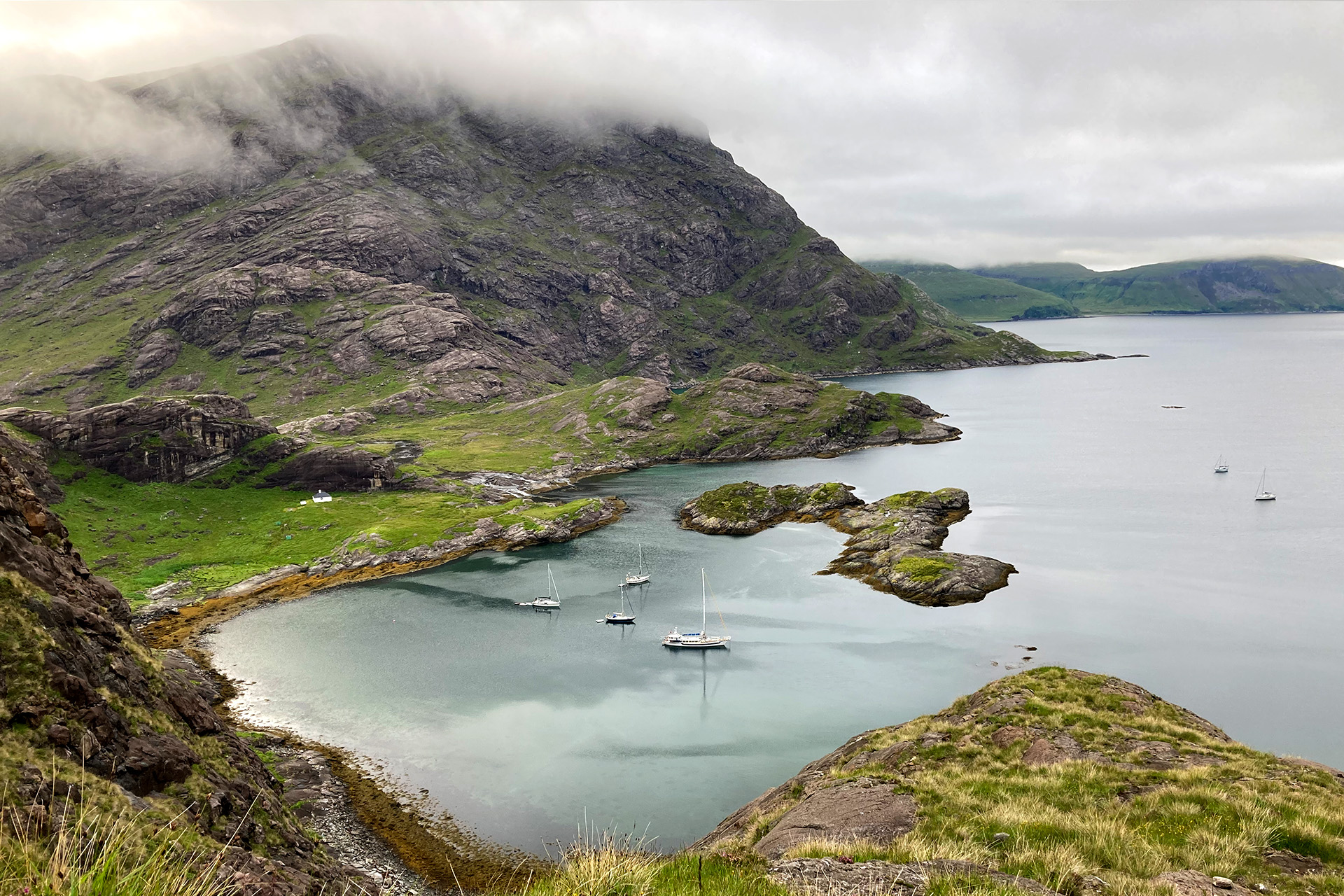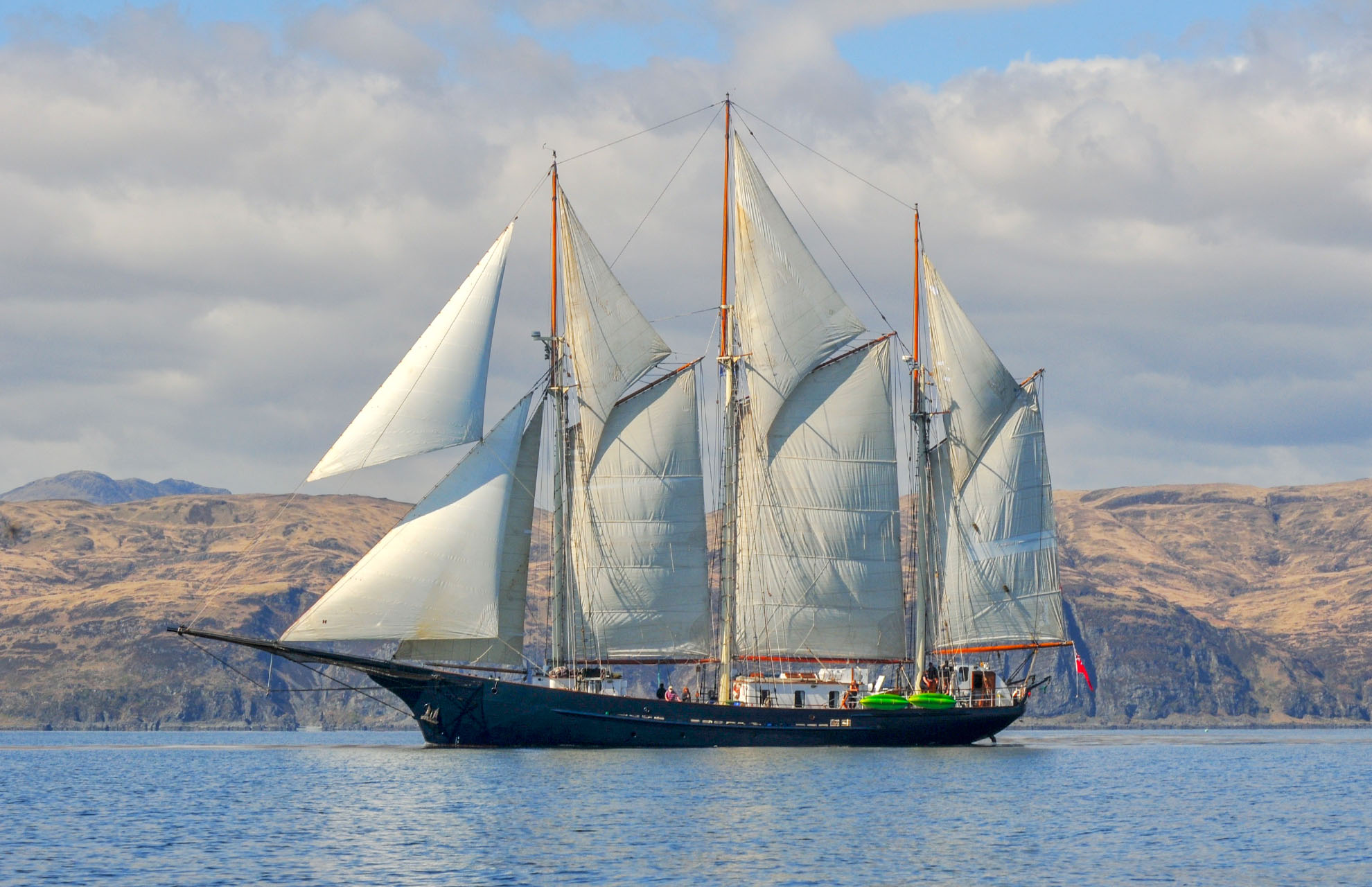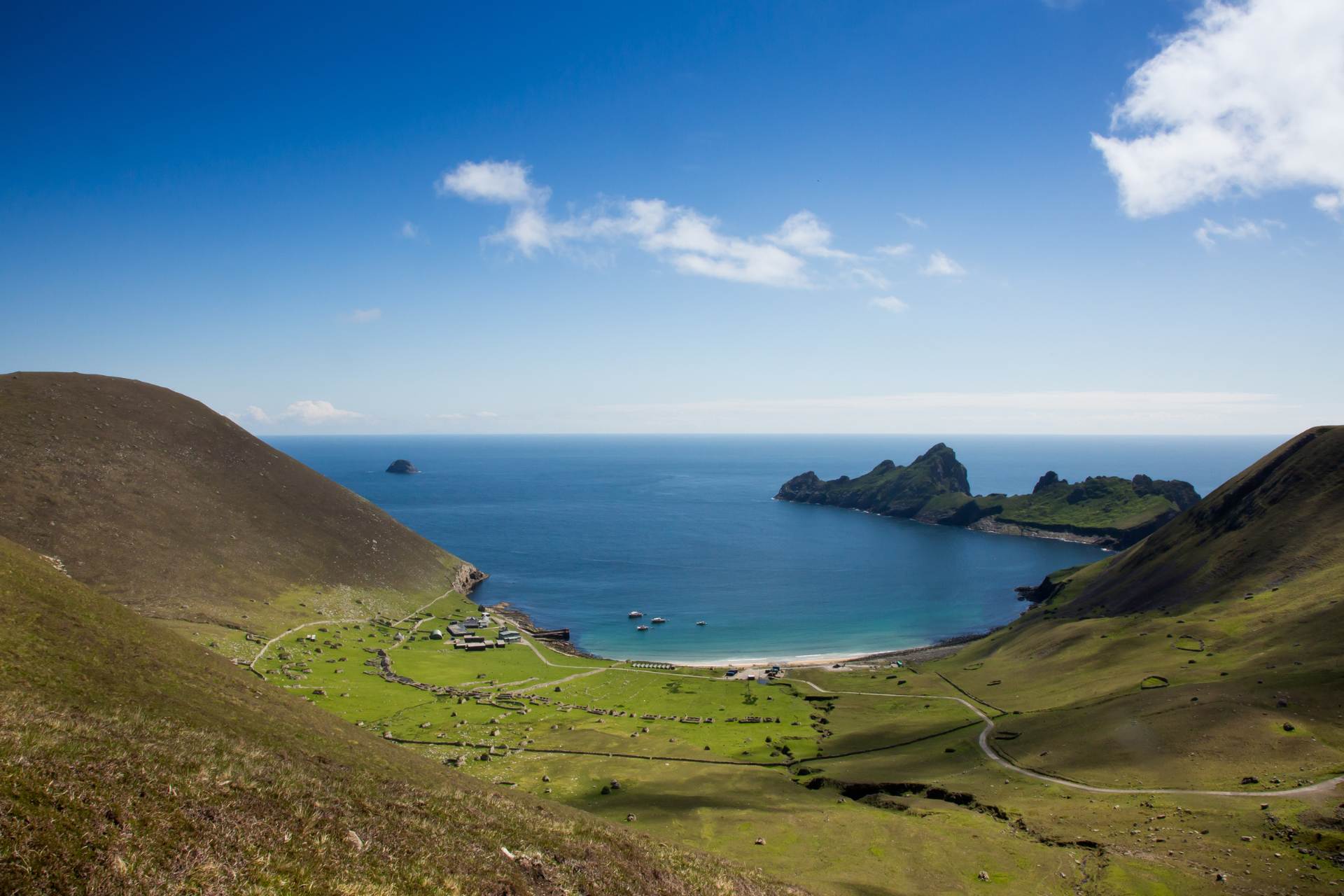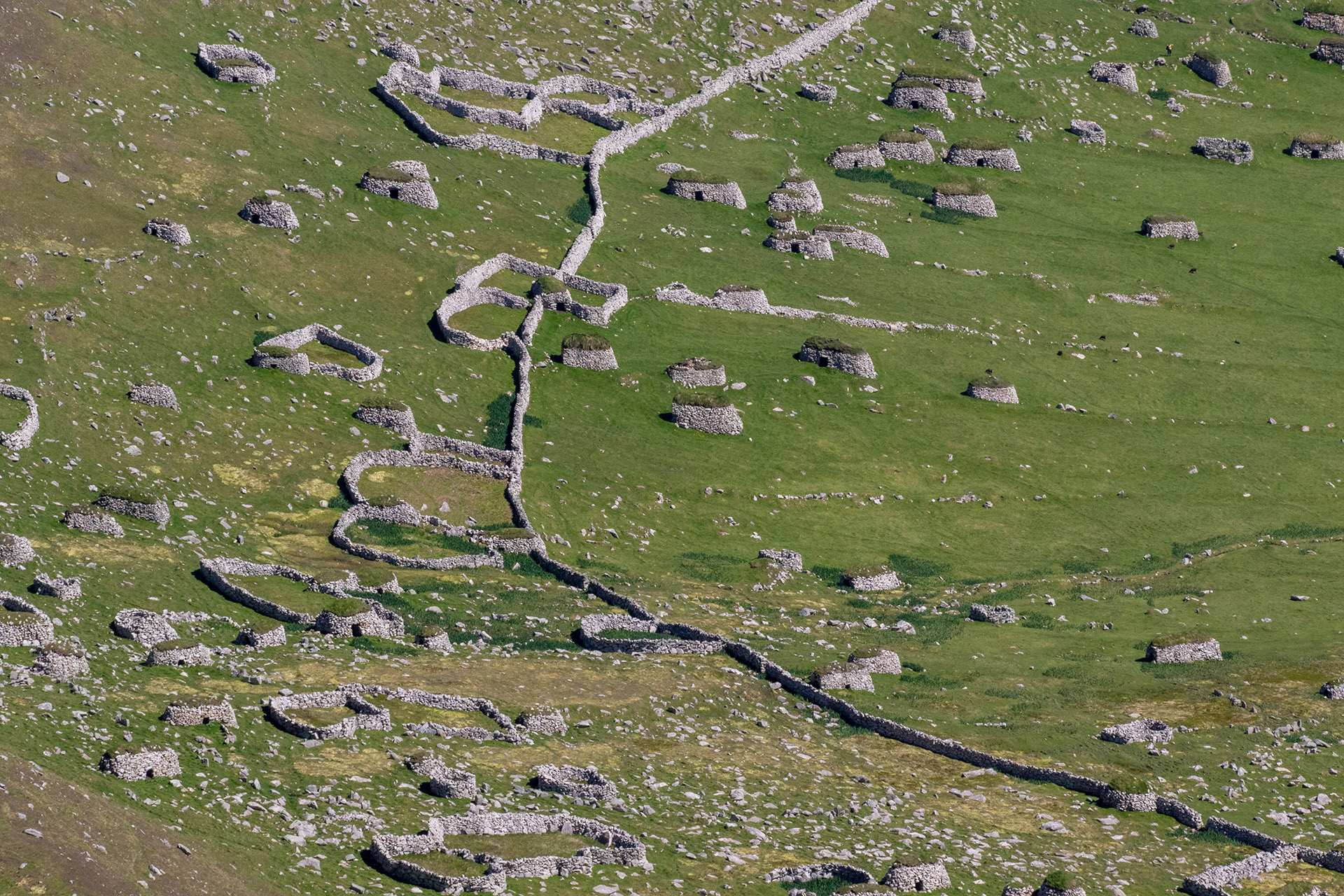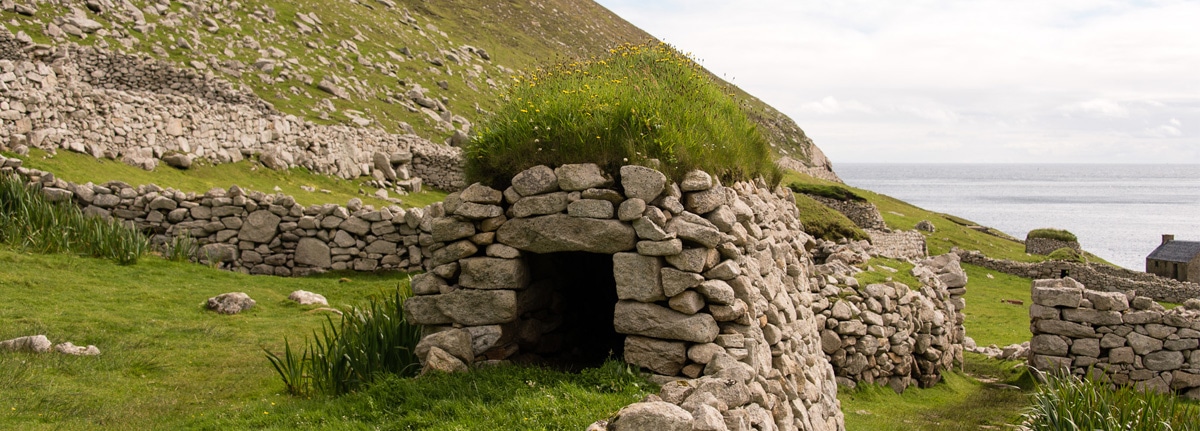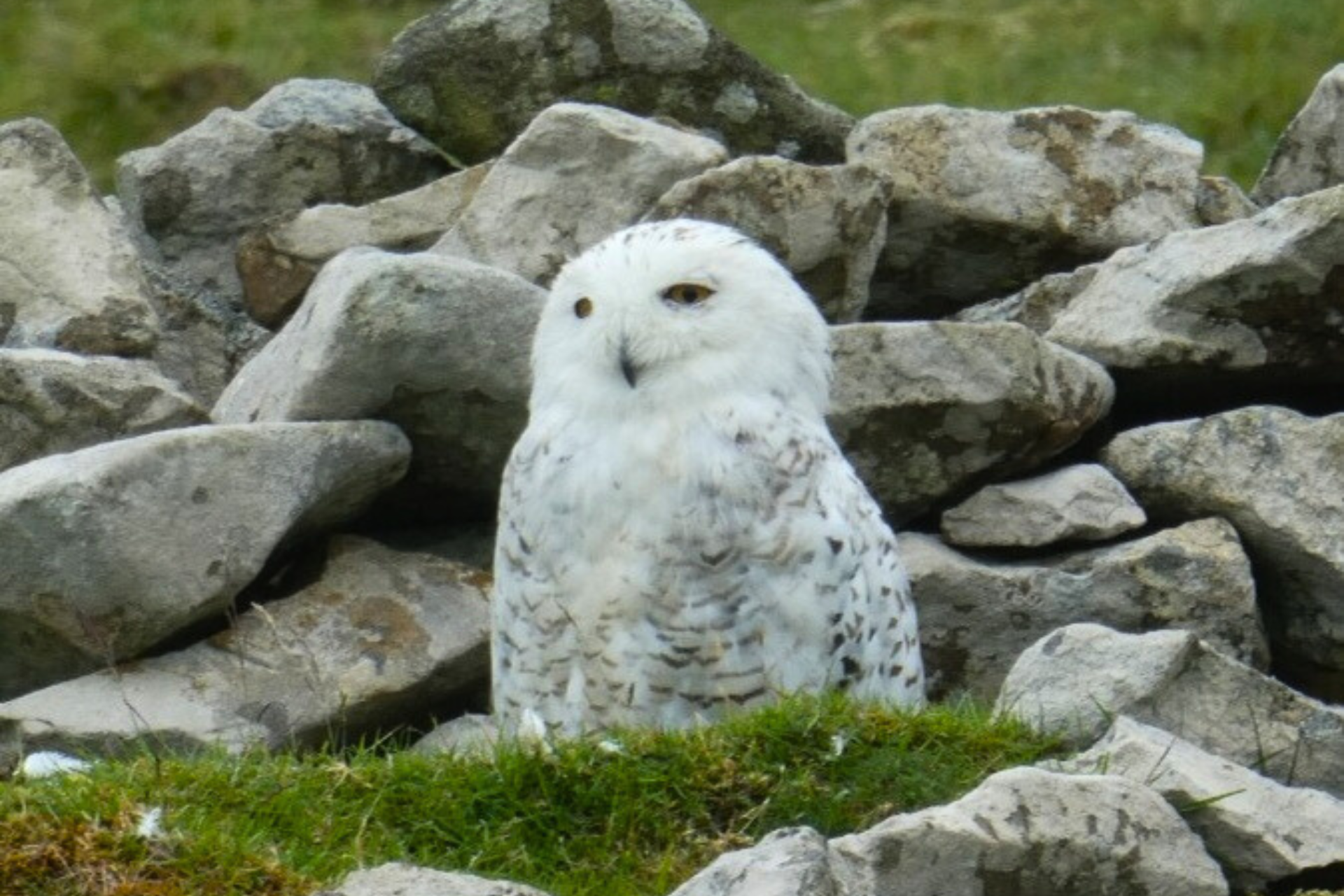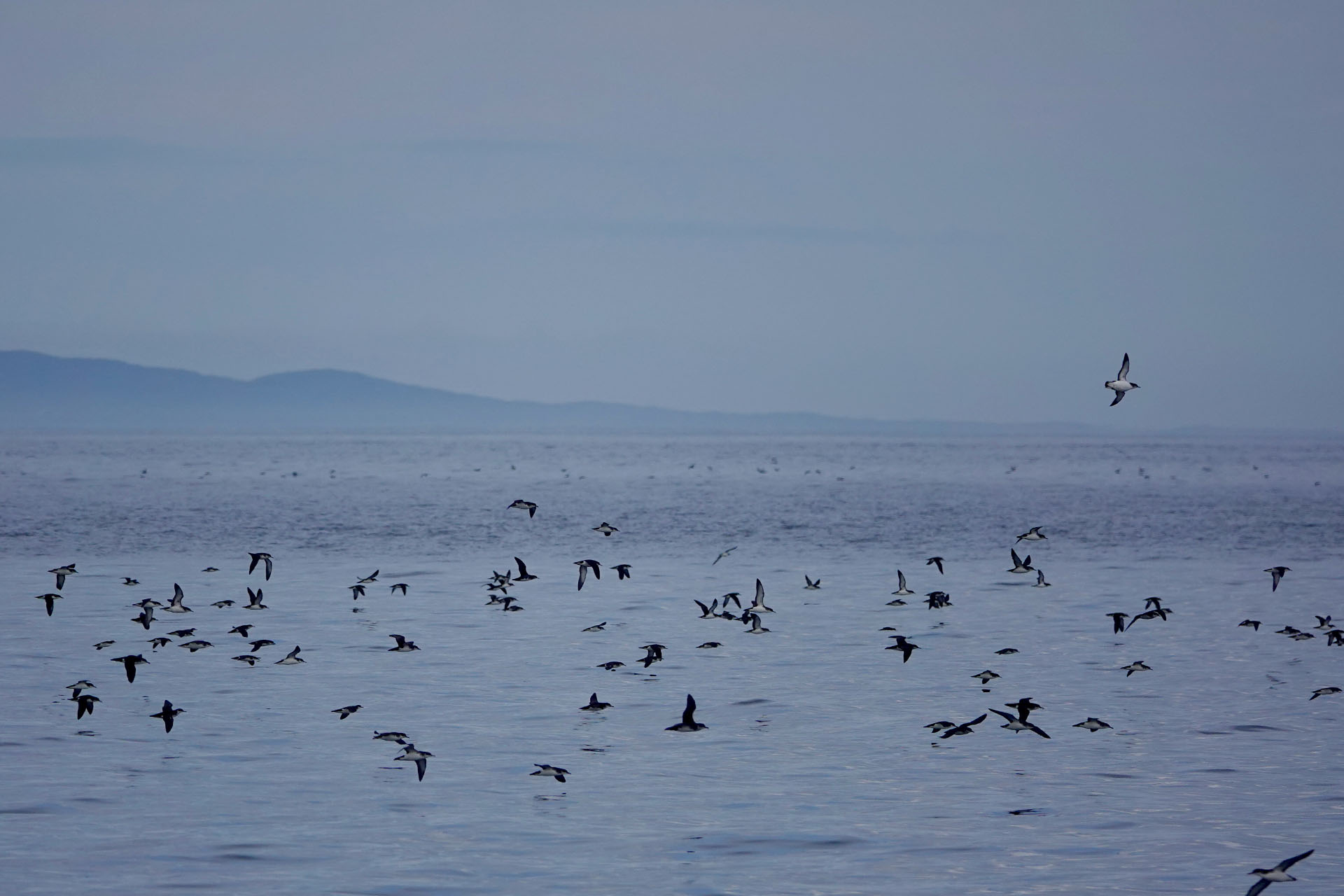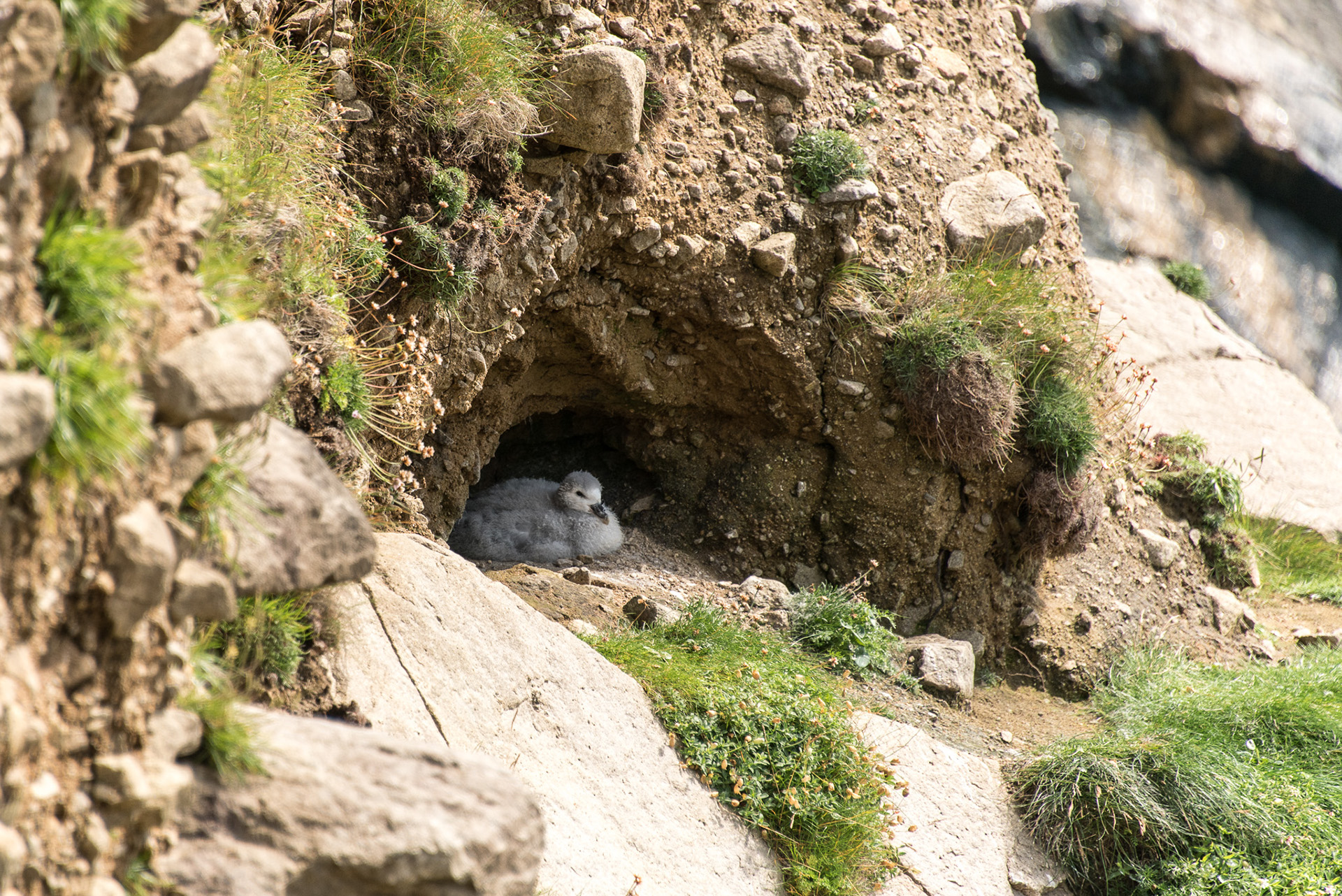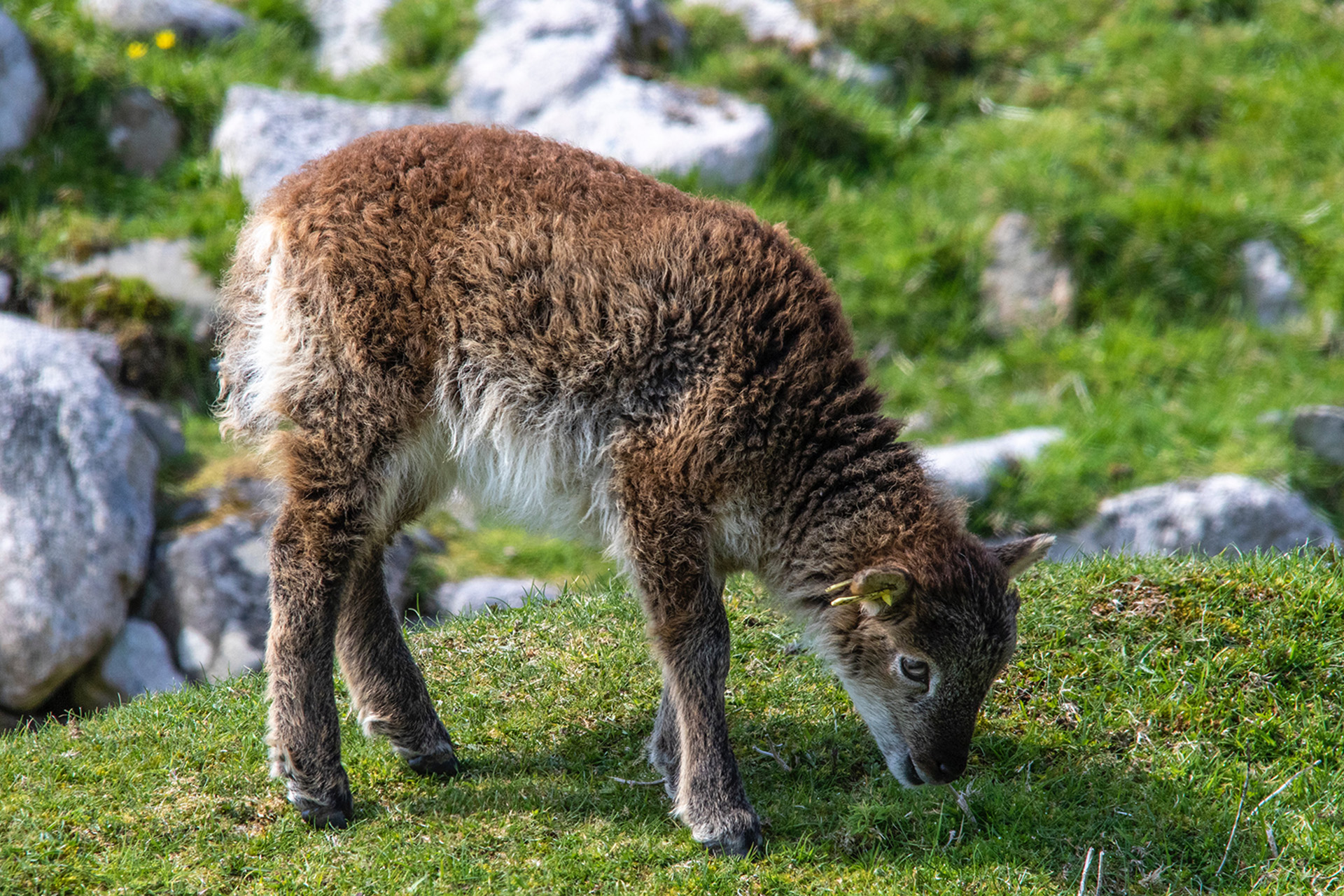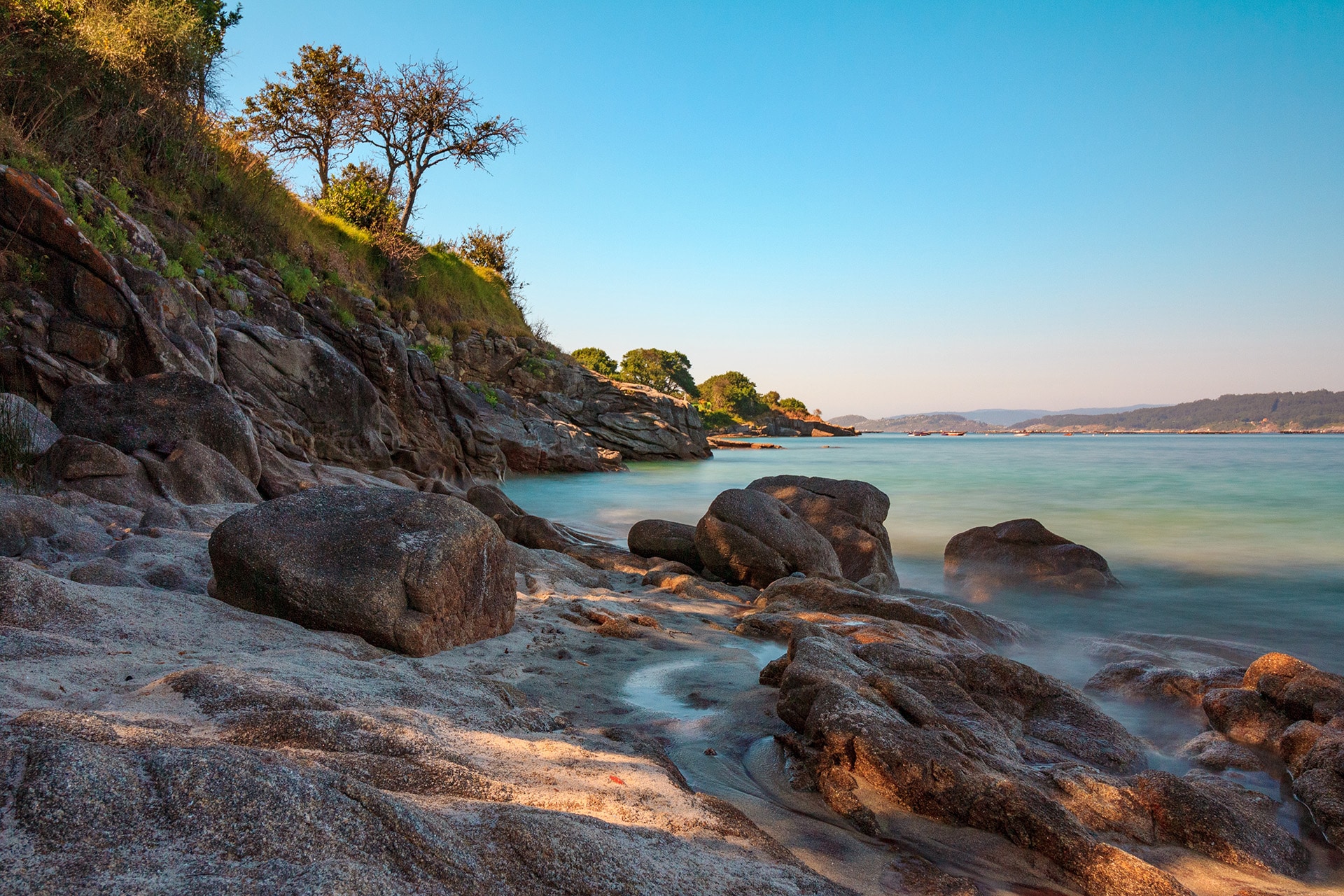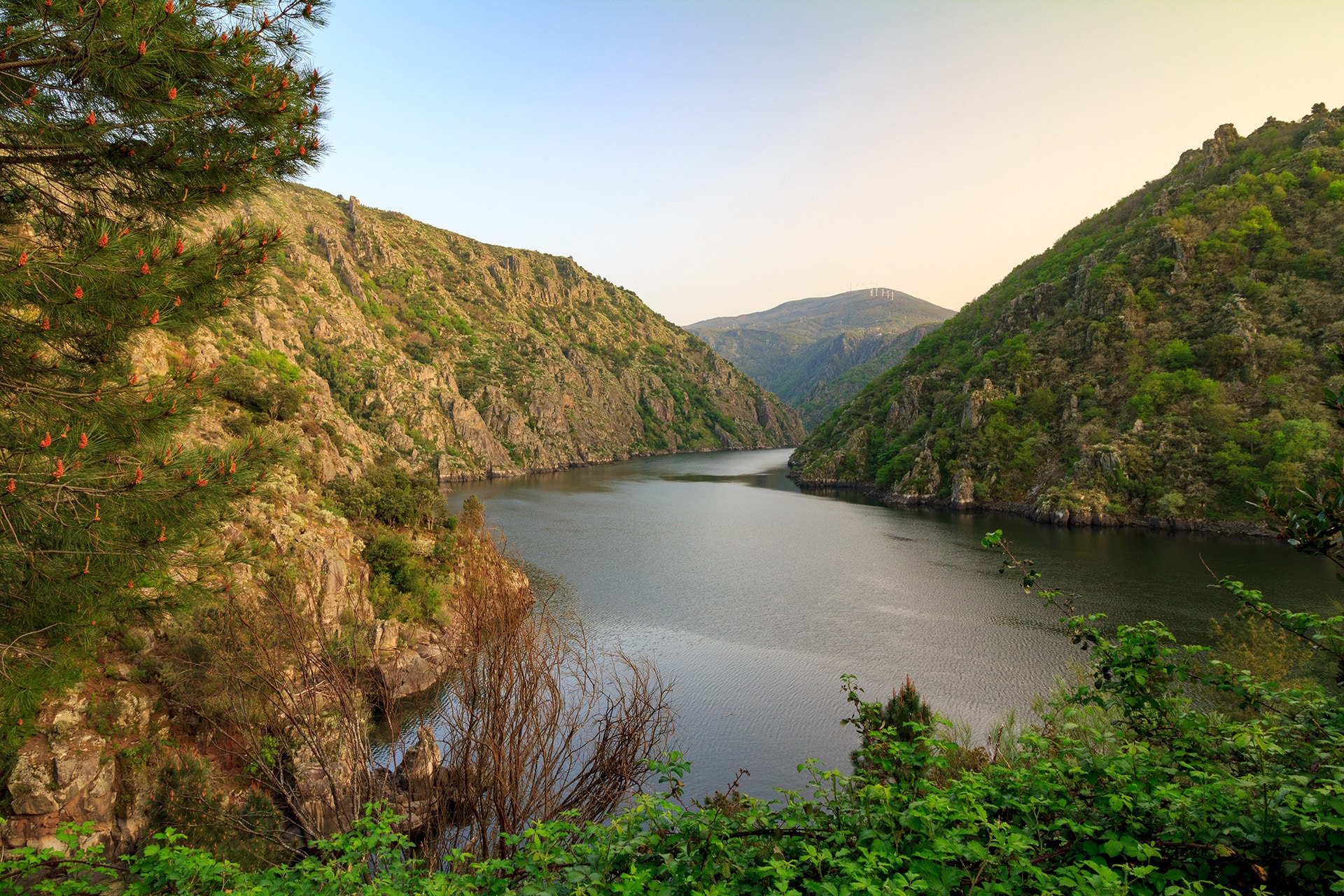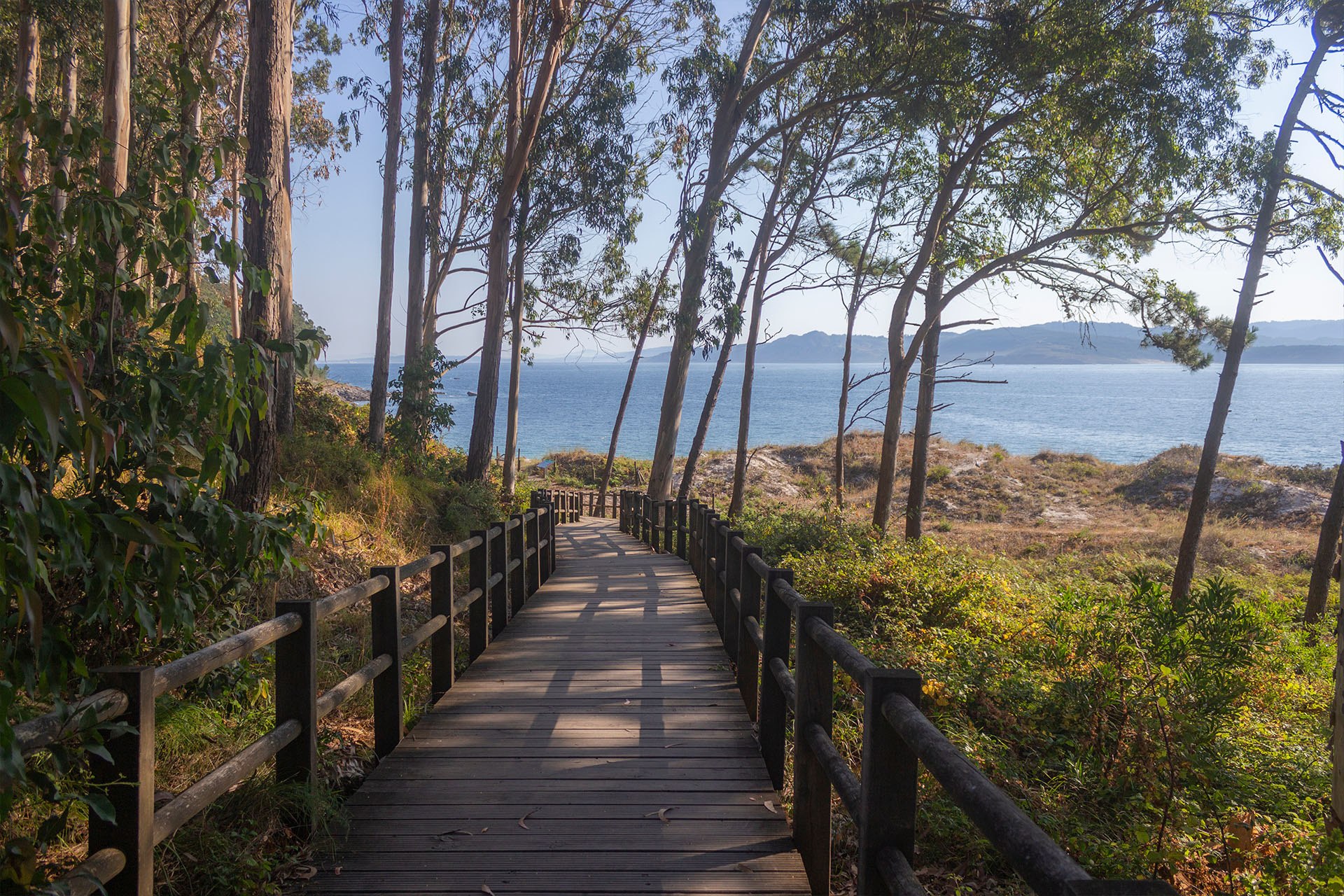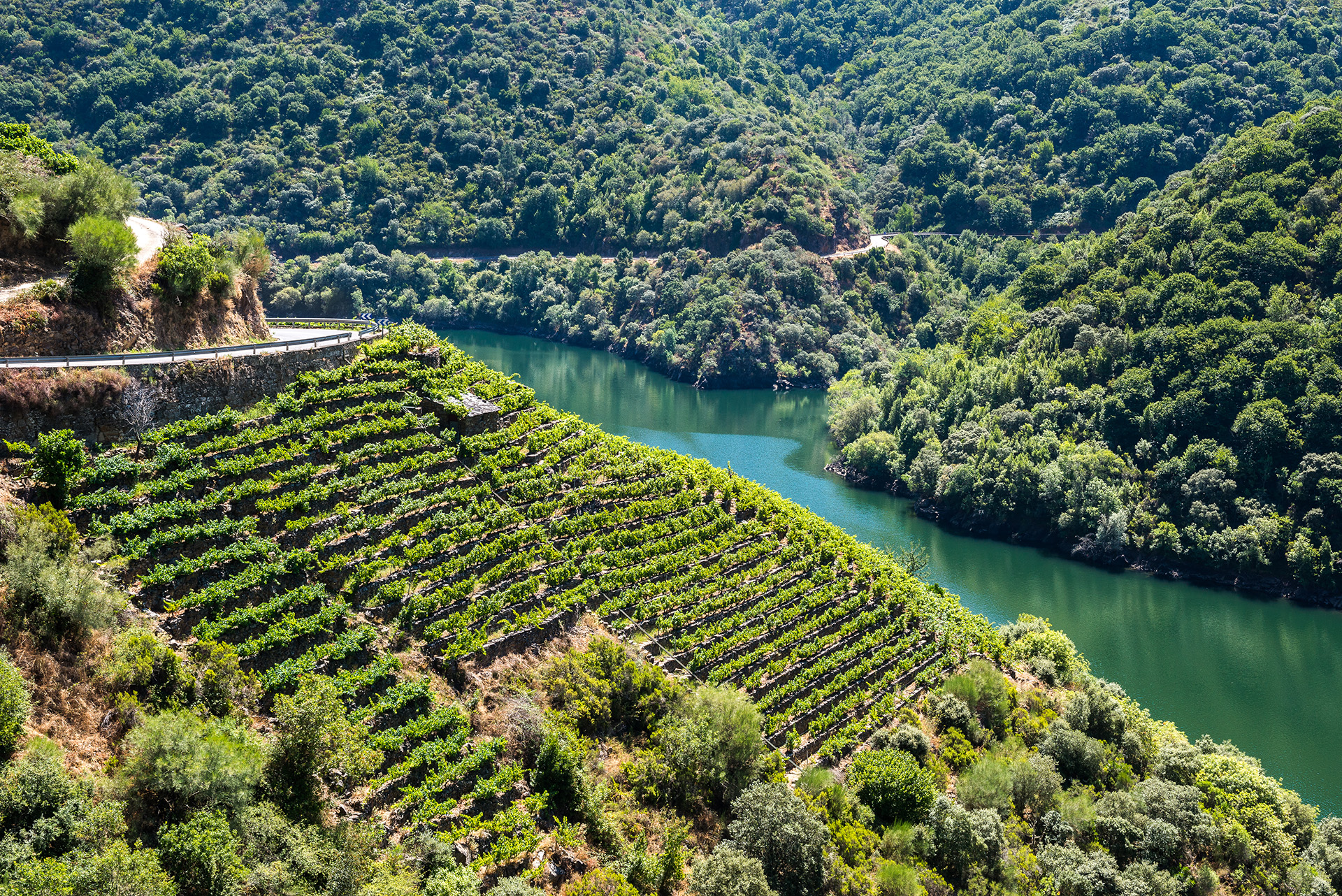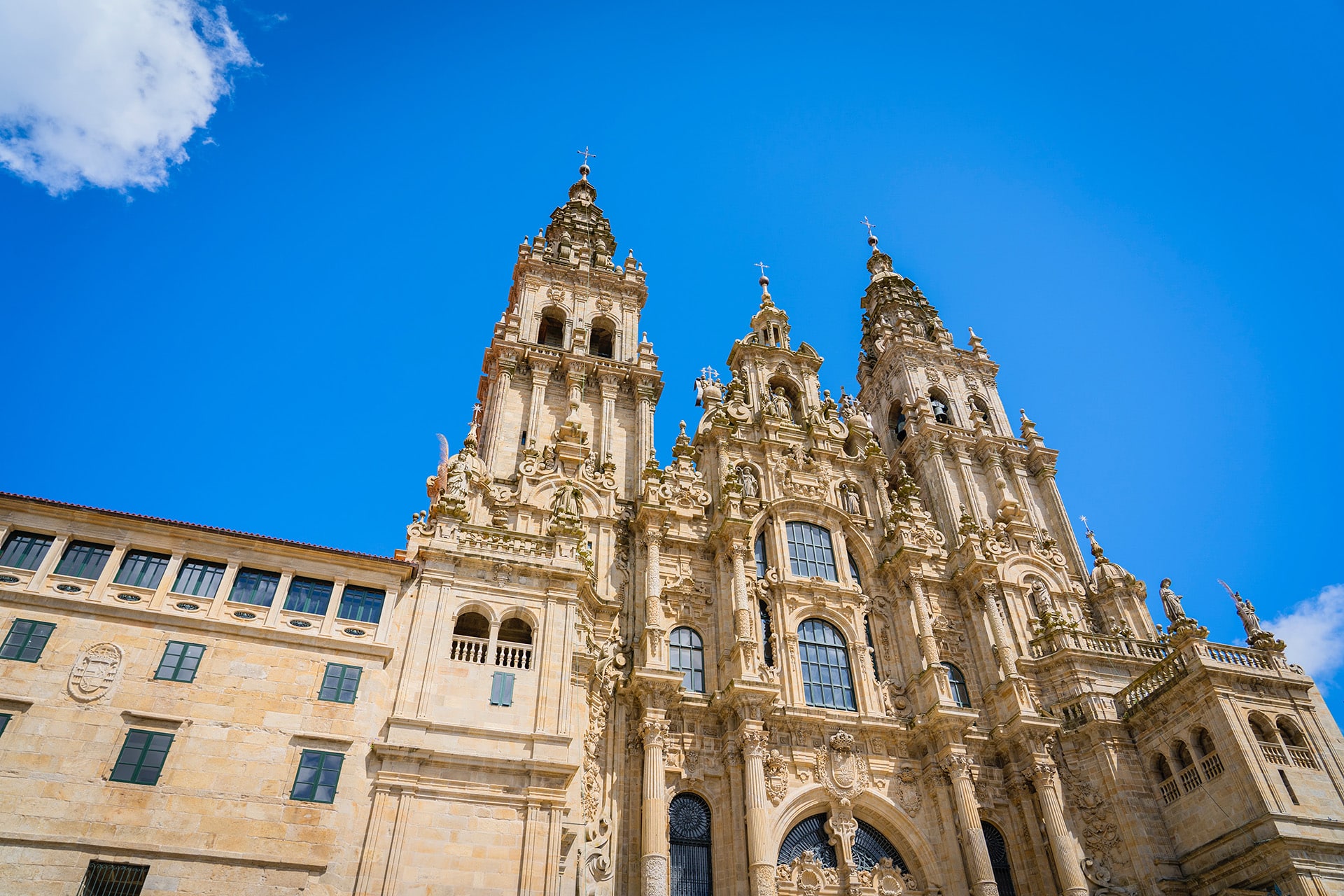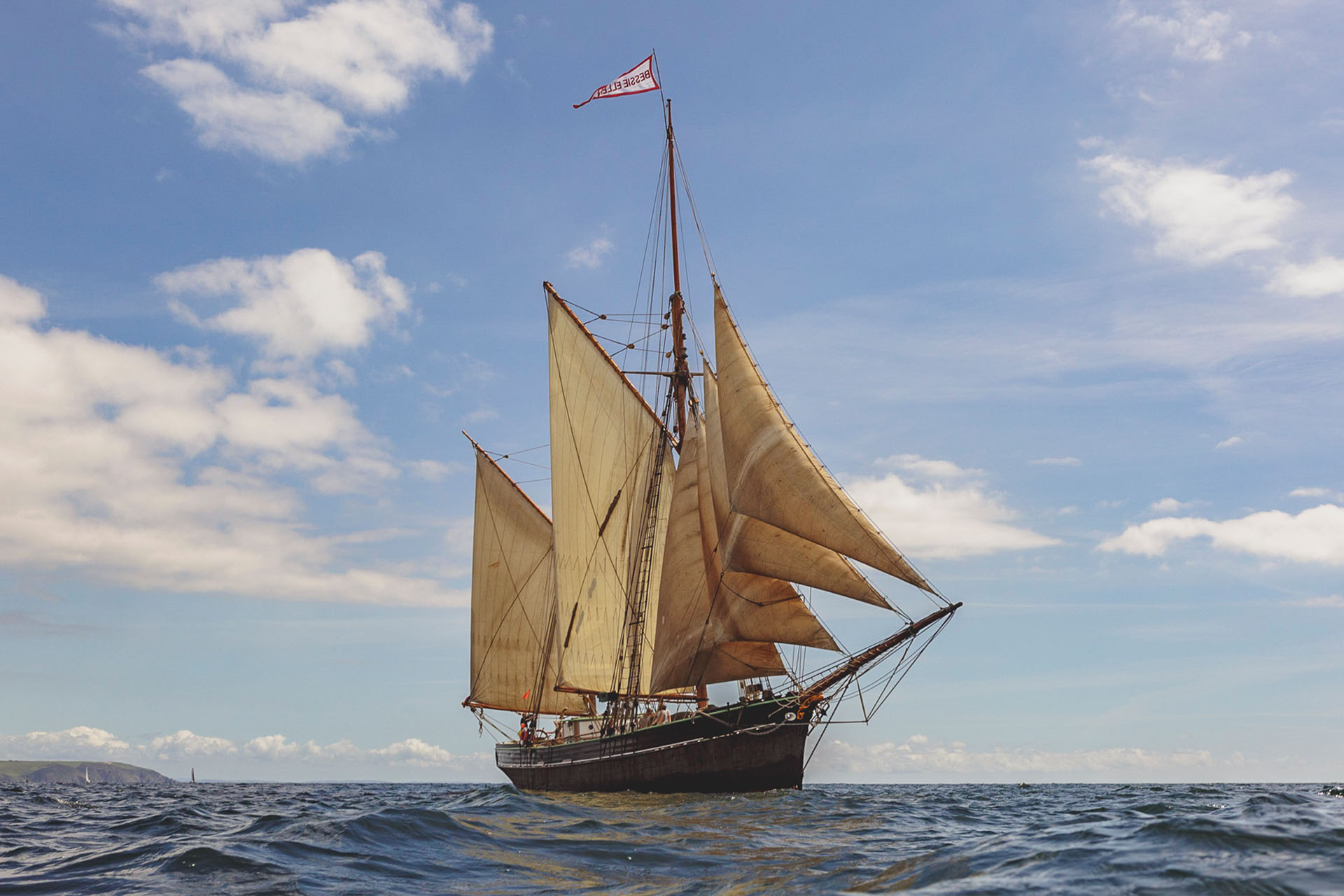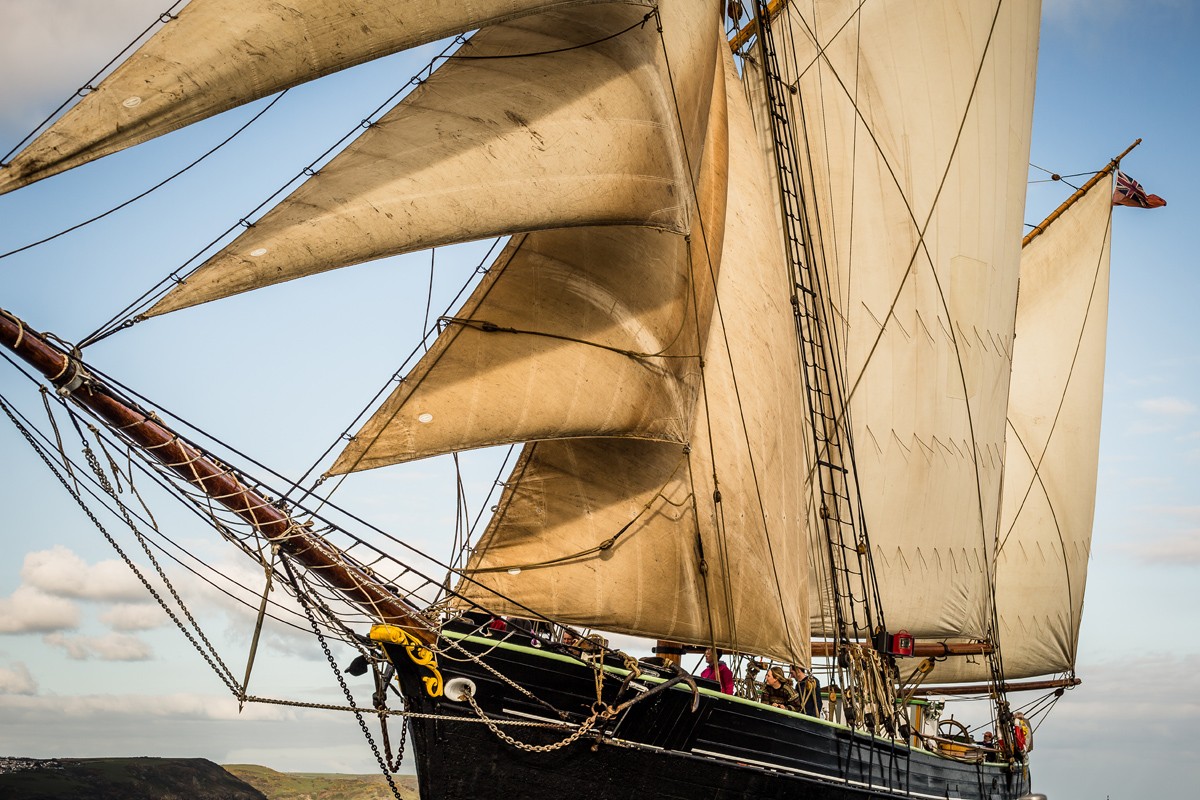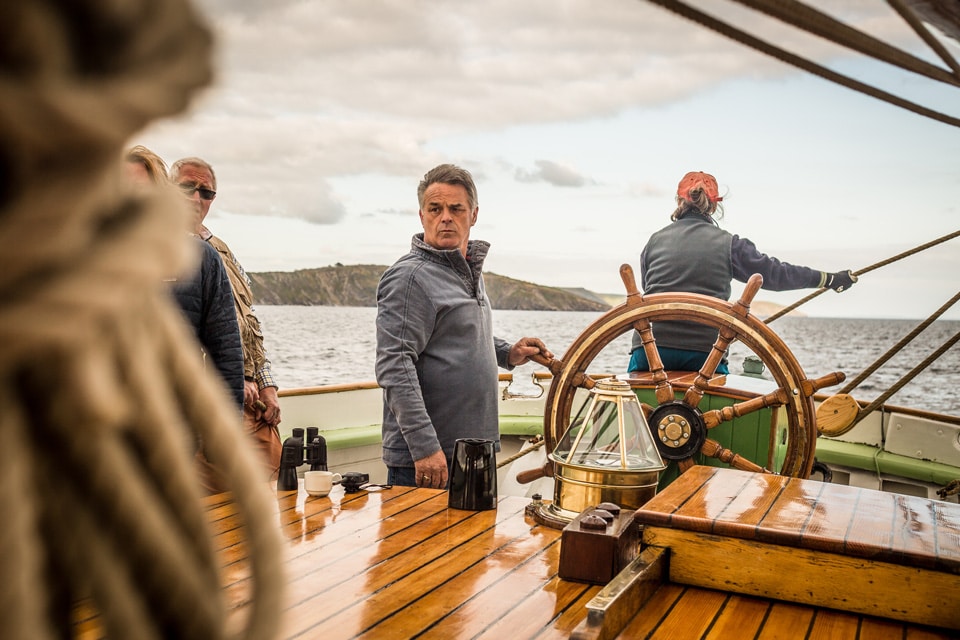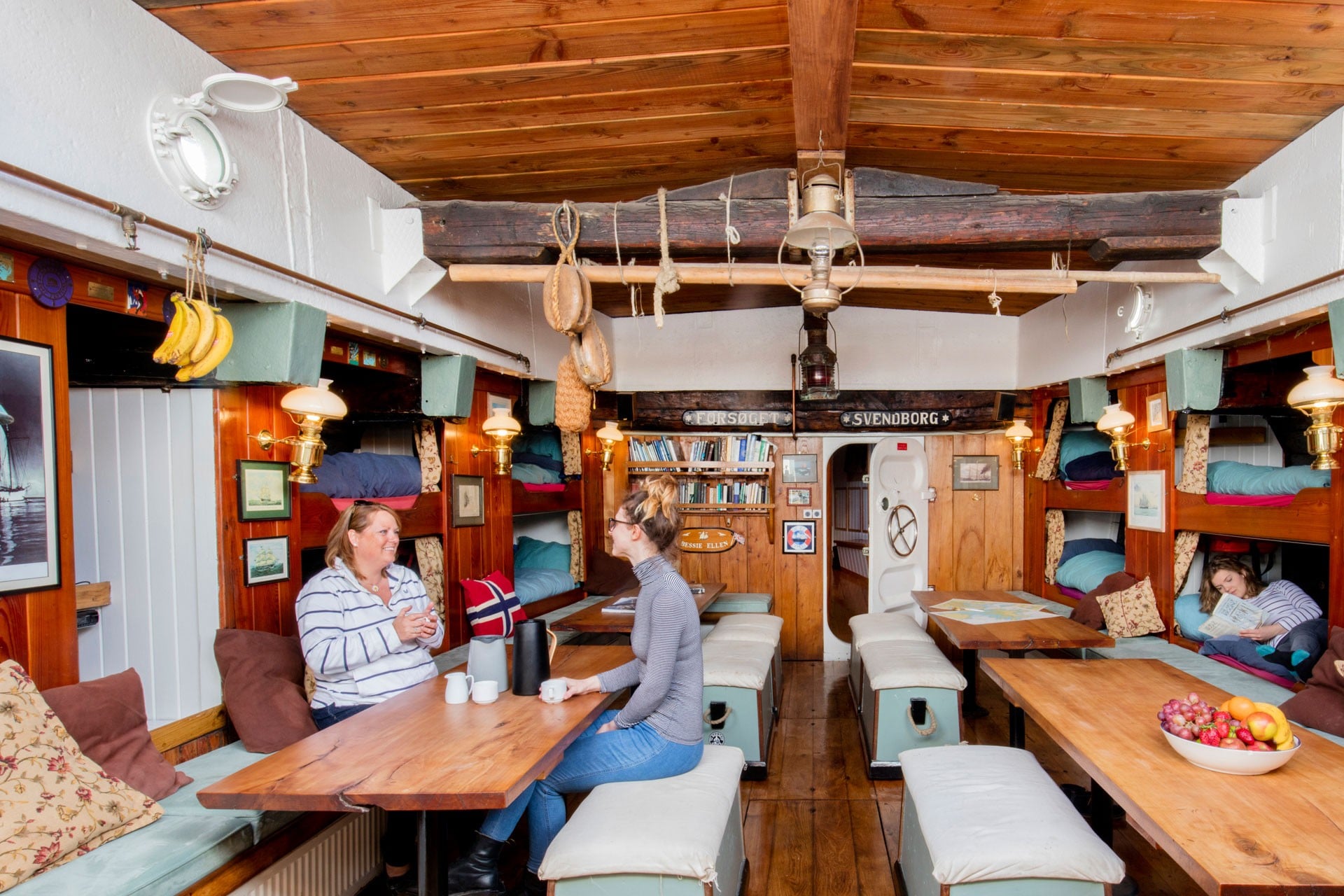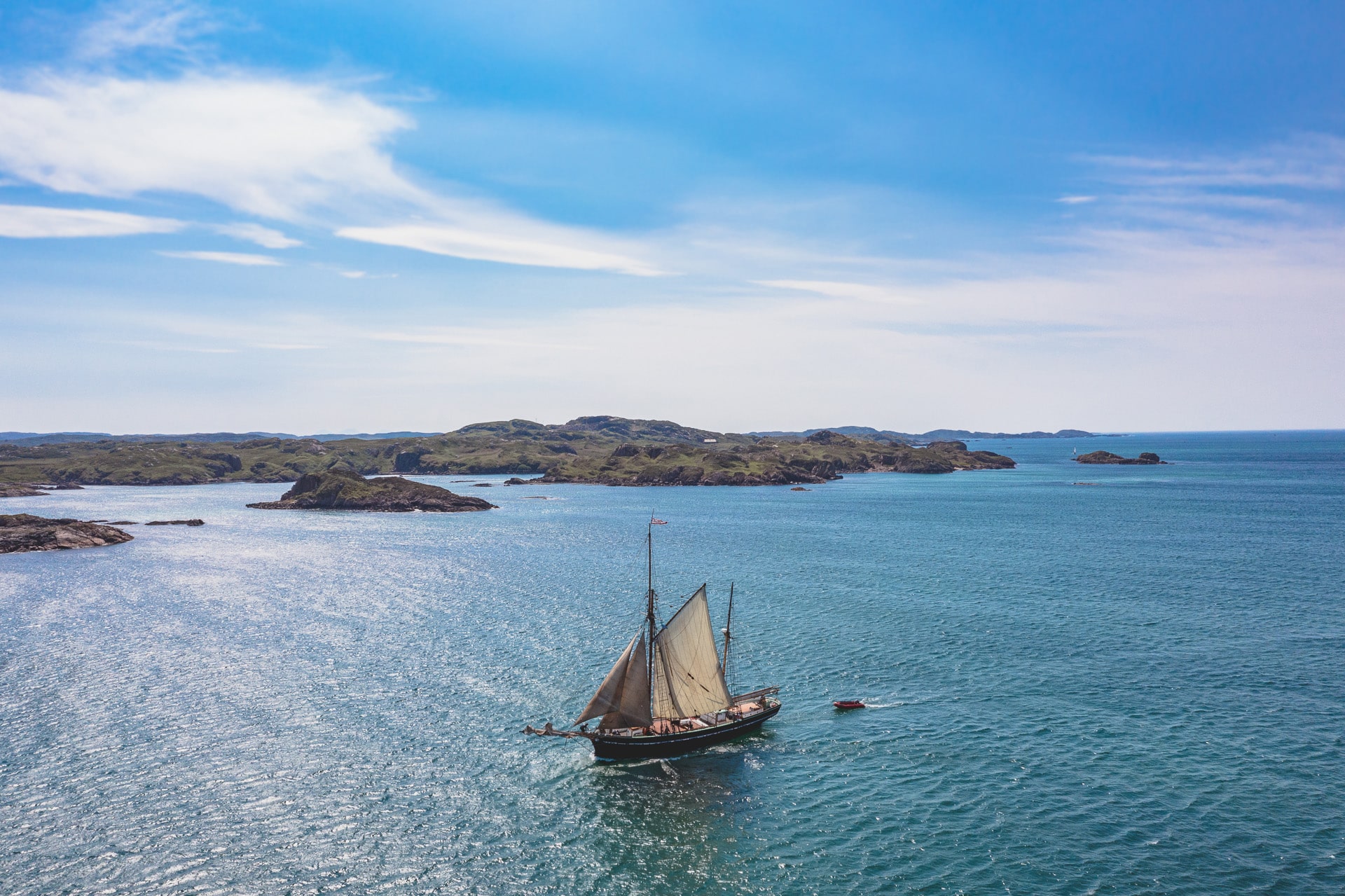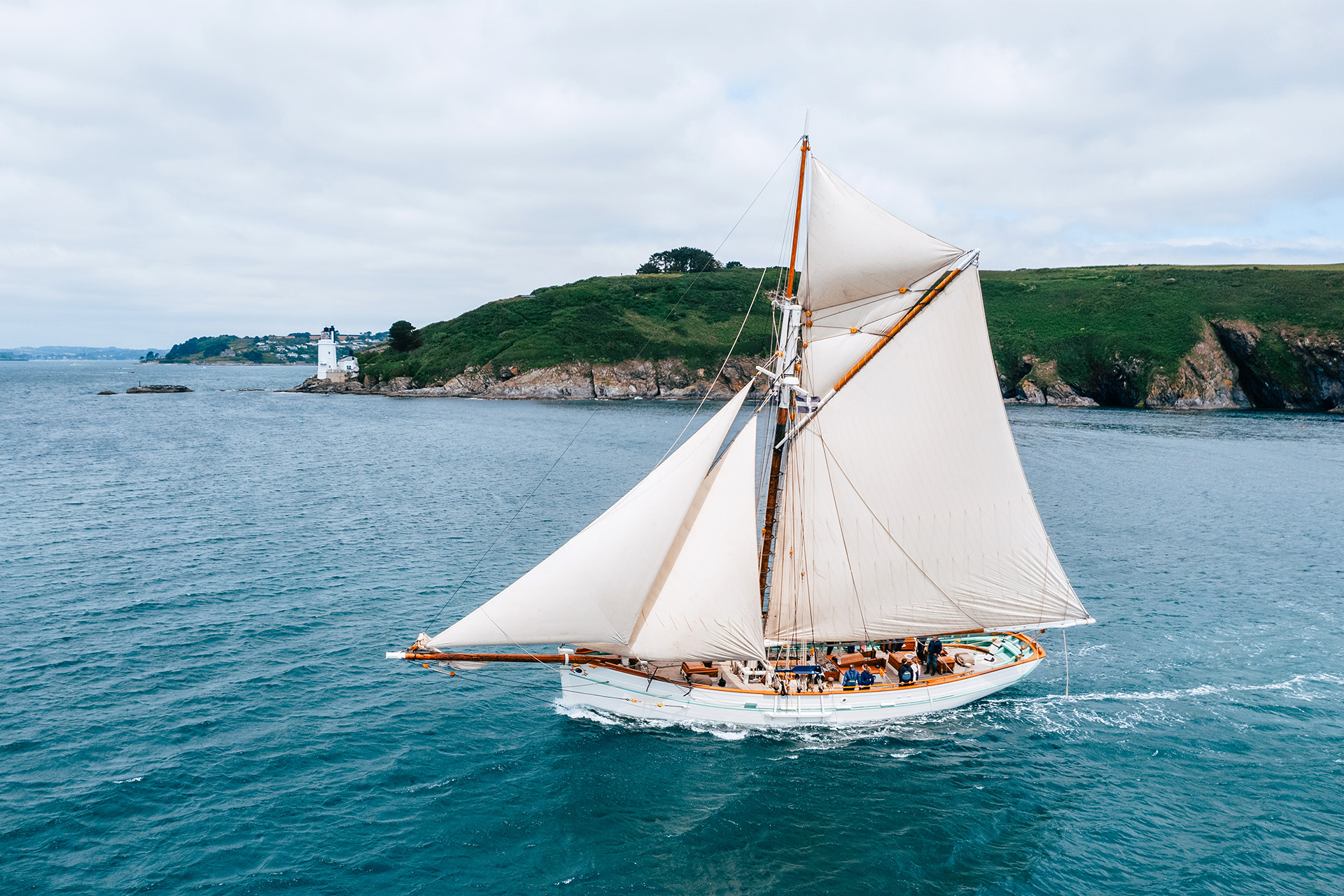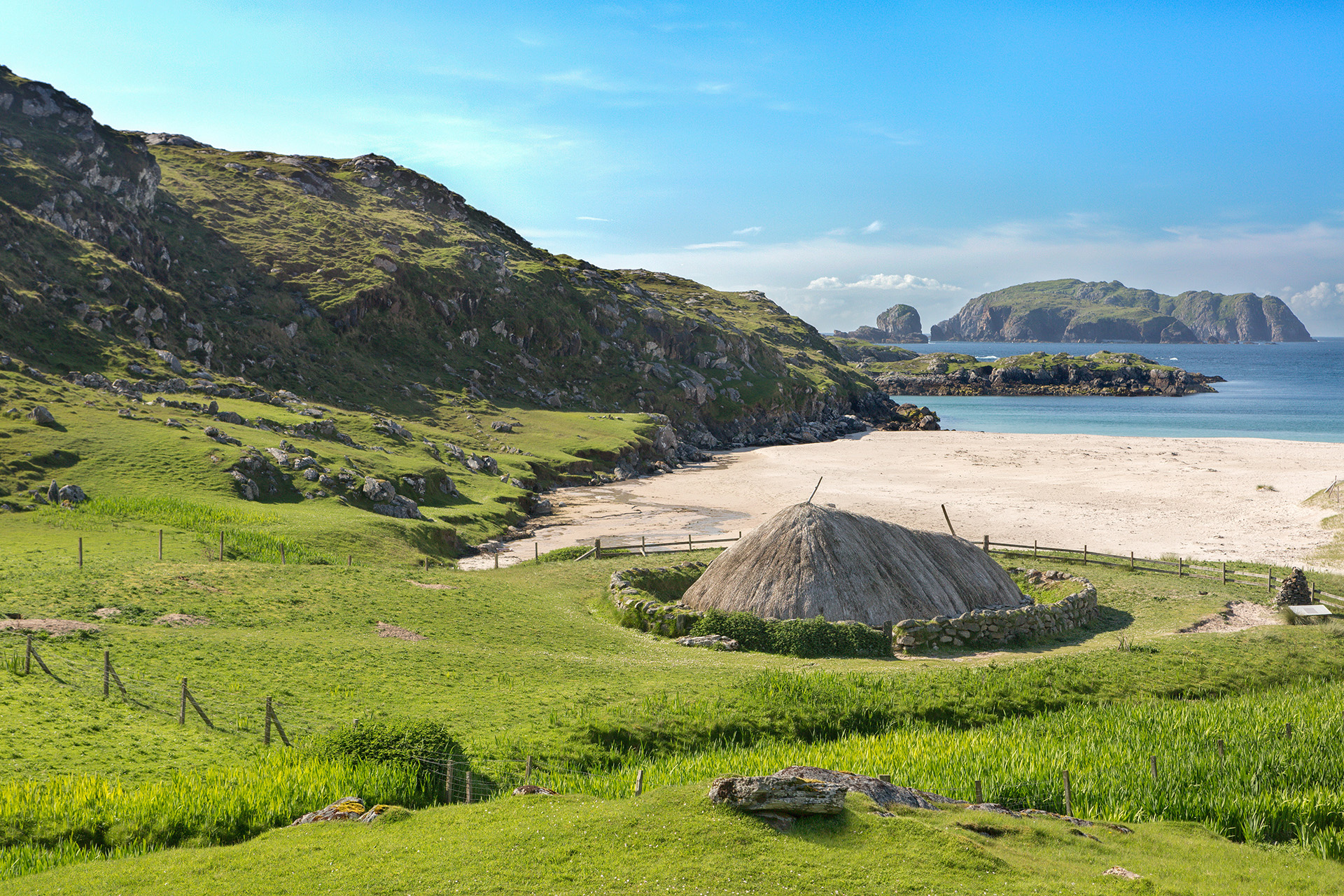
The Outer Hebrides, located off the west coast of Scotland, are a group of islands with a unique blend of Scottish and Gaelic culture, history and nature. With crystal-clear waters, white sandy beaches, and rugged coastline, the islands offer an unforgettable sailing experience. Our skippered sailing holidays to the Outer Hebrides offer a fantastic opportunity to explore the islands by sea – the perfect way to discover the diverse beauty of this remote and unspoiled corner of Scotland. The Outer Hebrides are made up of more than 70 islands – with just 15 of them inhabited.
Here, we’ve gathered just a few of our favourite islands to visit on a sailing holiday in the Outer Hebrides. For those looking to explore further afield, take a look at our St Kilda travel guide.
Barra
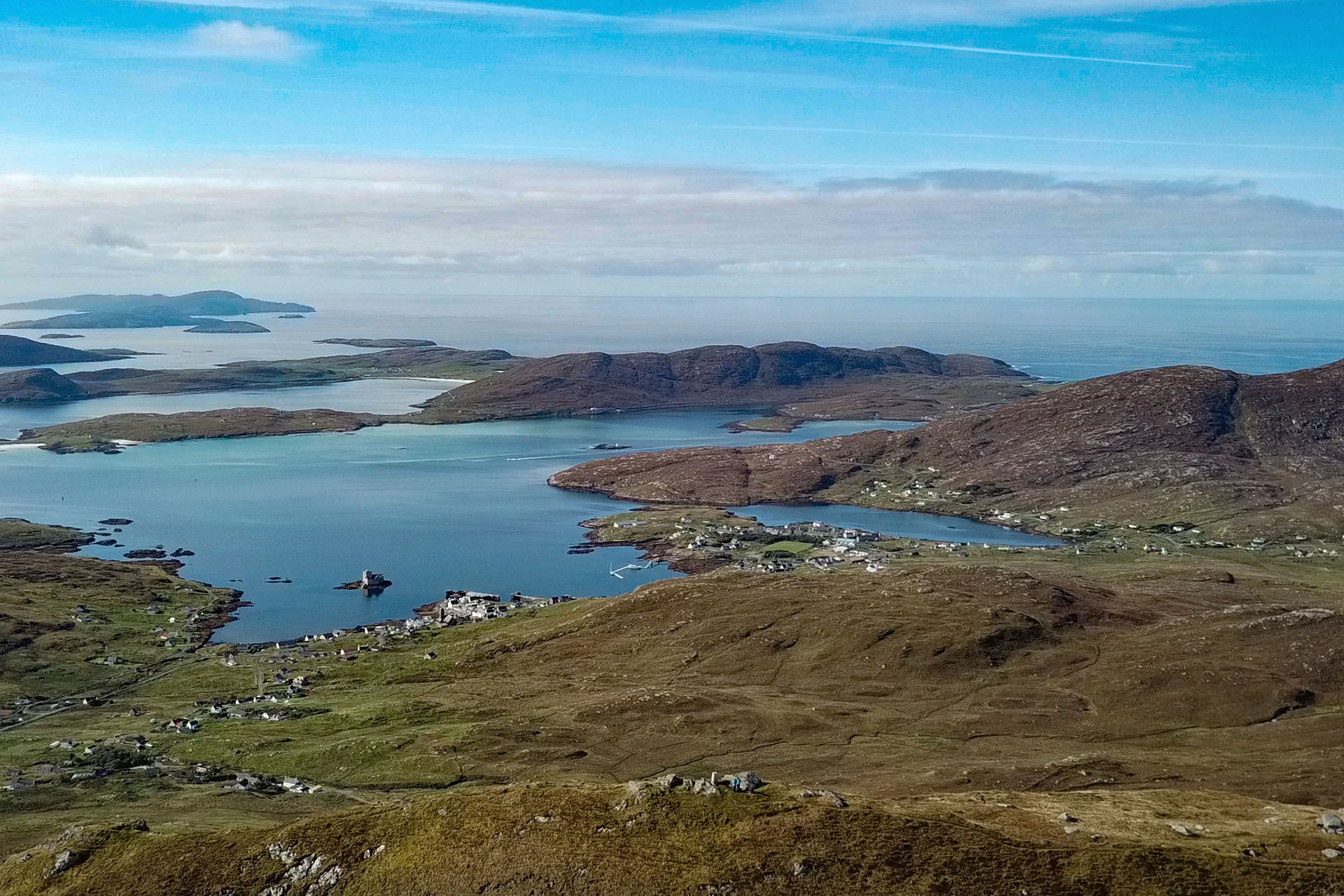
The Isle of Barra is located in the southernmost part of the Outer Hebrides and is home to some of the most stunning scenery in Scotland. Barra is famous for its breathtaking beaches, including Traigh Mhor, a white sand shell beach with crystal clear turquoise waters. Traig Mhor also houses Barra’s airport, unique in being the only beach runway in the world with scheduled flights! Nature lovers should keep their binoculars at the ready, as Barra is also an excellent destination for wildlife spotting. A diverse range of species call the island home, including otters, seals, and golden eagles.
North and South Uist
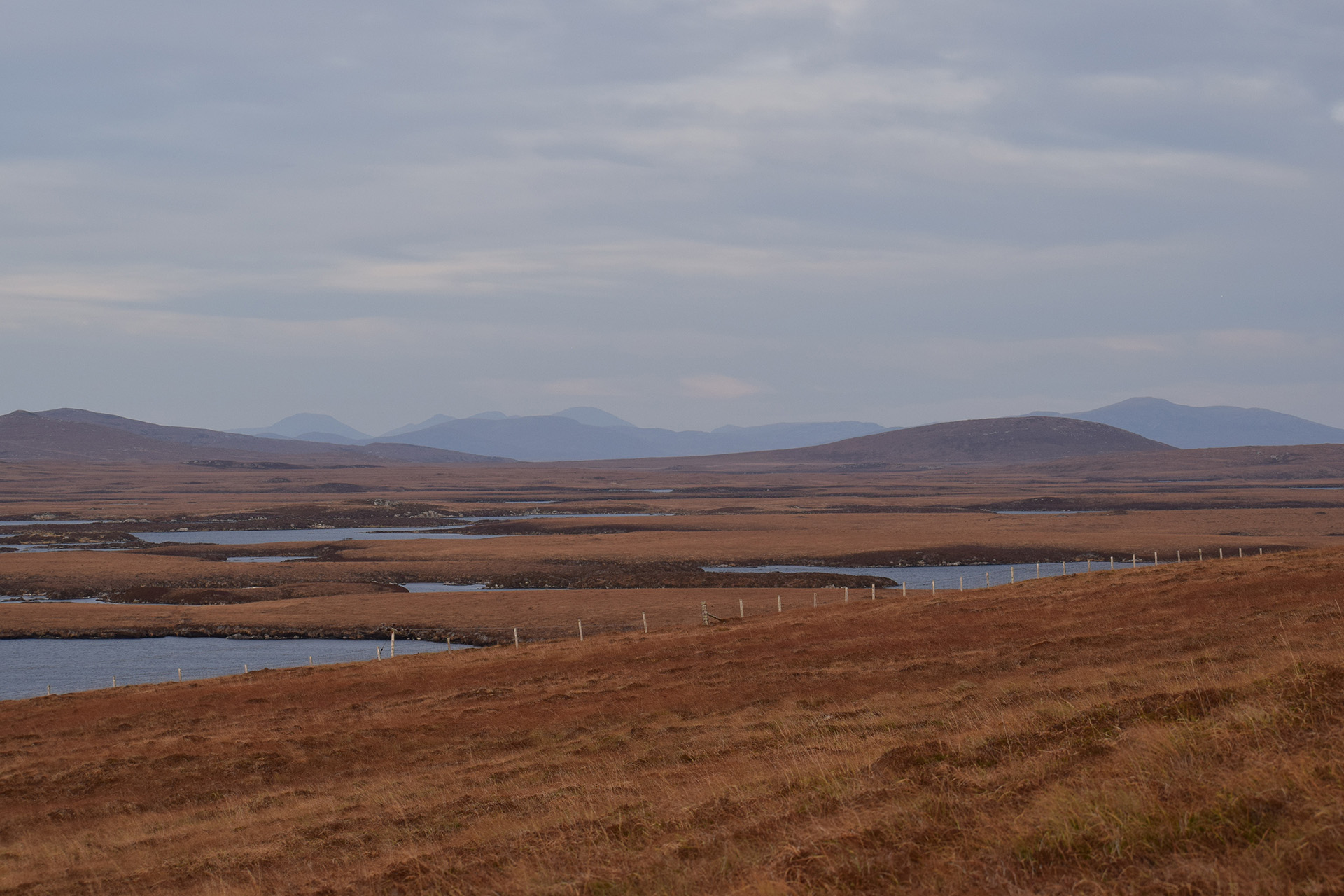
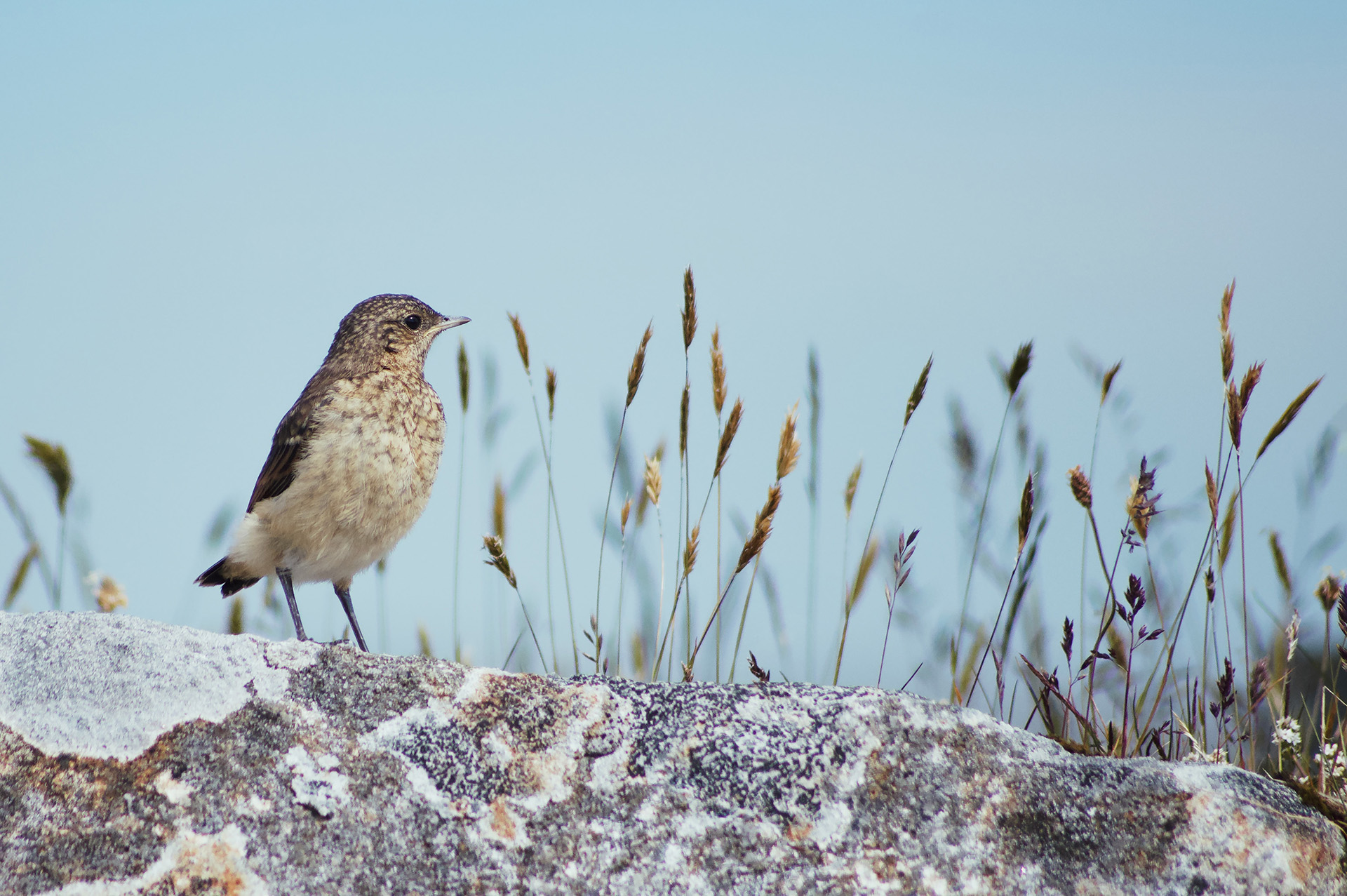
The islands of North and South Uist lie centrally in the Outer Hebrides. Their unique landscapes and cultural history makes them a popular destination for outdoor enthusiasts and history buffs alike. With awe-inspiring beaches like Cula Bay and Traigh Lingeigh, North Uist is a mecca for walkers, birdwatchers and cyclists. A diverse terrain of fresh and saltwater lochs, cultivated crofts, and miles of sandy beaches can be found across the islands. Bird lovers shouldn’t miss the chance to spot the corncrakes at the RSPB Nature Reserve in Balranald, one of Europe’s most endangered species. South Uist is also home to miles of breathaking beaches and anchorages, including Machair Beach and the beautiful Traigh Eais. Delve into the island’s history by visiting the Kildonan Museum and the ruins of Ormacleit Castle after a morning of good sailing.
Lewis and Harris

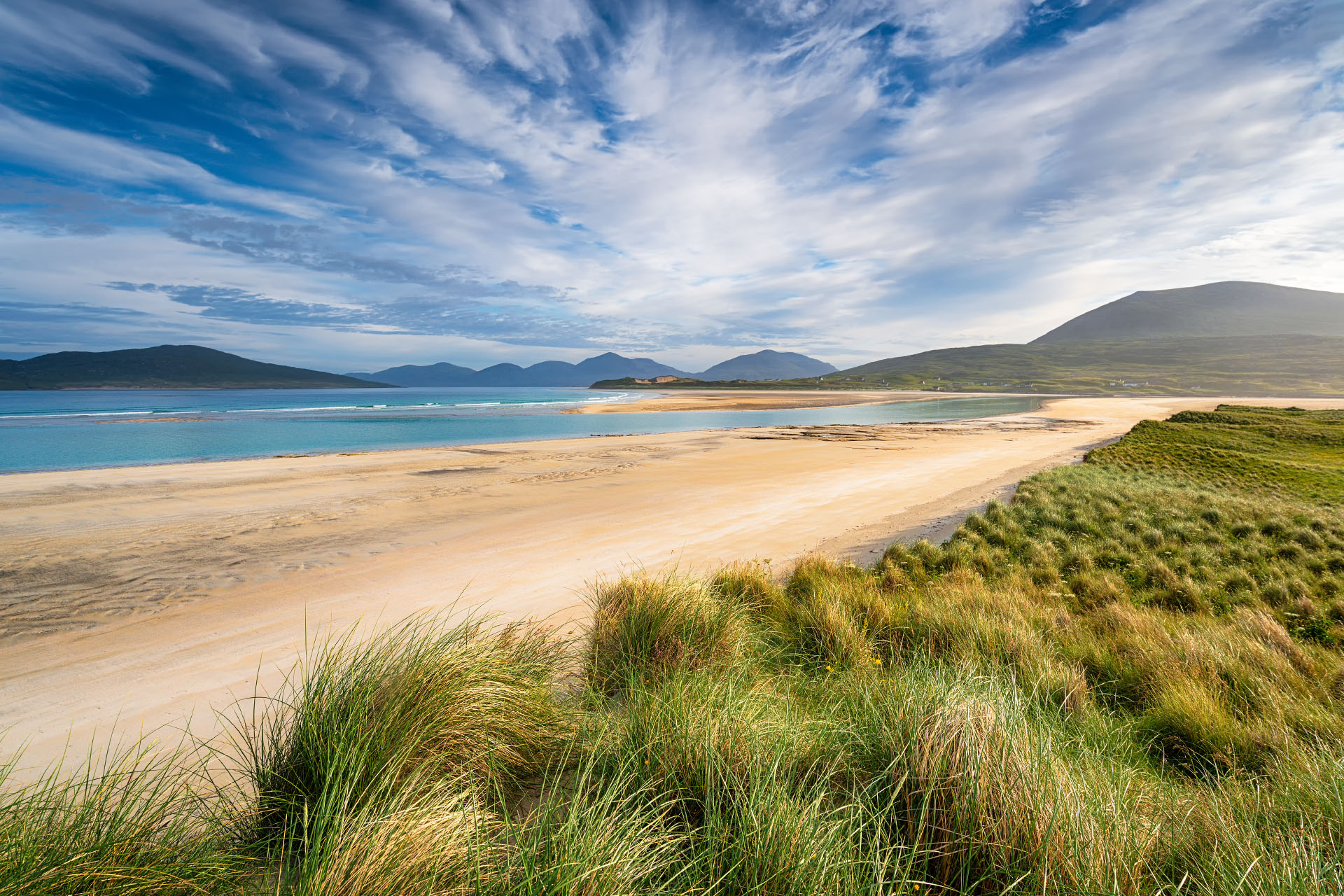
Lewis and Harris, although technically one landmass, are in fact two distinct islands. As the largest and most populated islands of the Outer Hebrides, Lewis and Harris are steeped in a rich cultural history. The islands boast an abundance of ancient ruins, showcasing the neolithic past found in the Outer Hebrides. Among the must-visit sites are the famous Callanish Standing Stones and the Carloway Broch.
Stornoway, on Lewis, is the capital of the Outer Hebrides, and an excellent base for exploring the islands. Gain a deeper understanding of the town’s heritage by visiting nearby Stornoway Museum, or take a stroll down the main street for a true taste of Scottish culture. Whether you’re a history buff or simply seeking natural beauty, Lewis and Harris will be sure to delight.
Benbecula
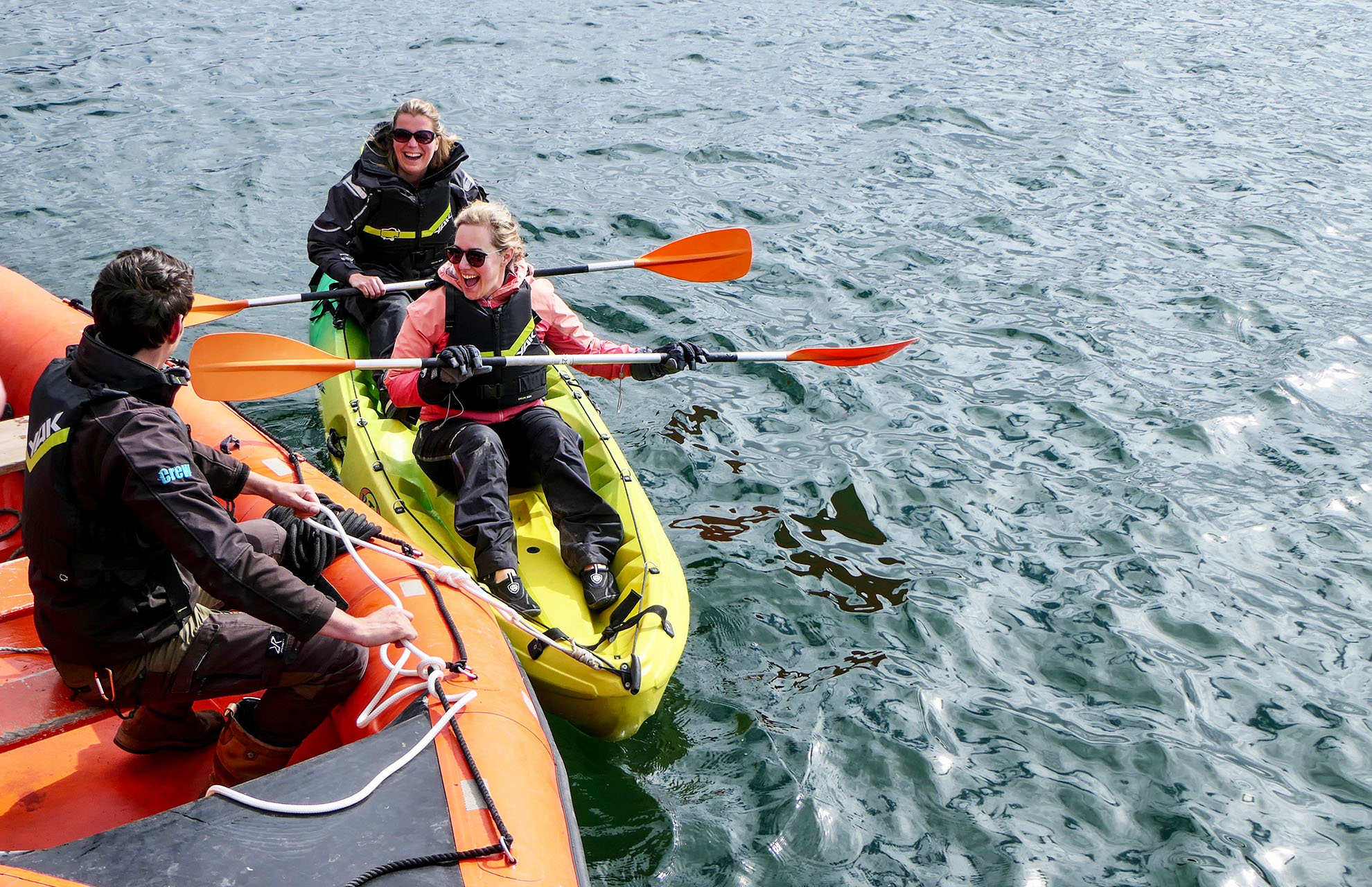
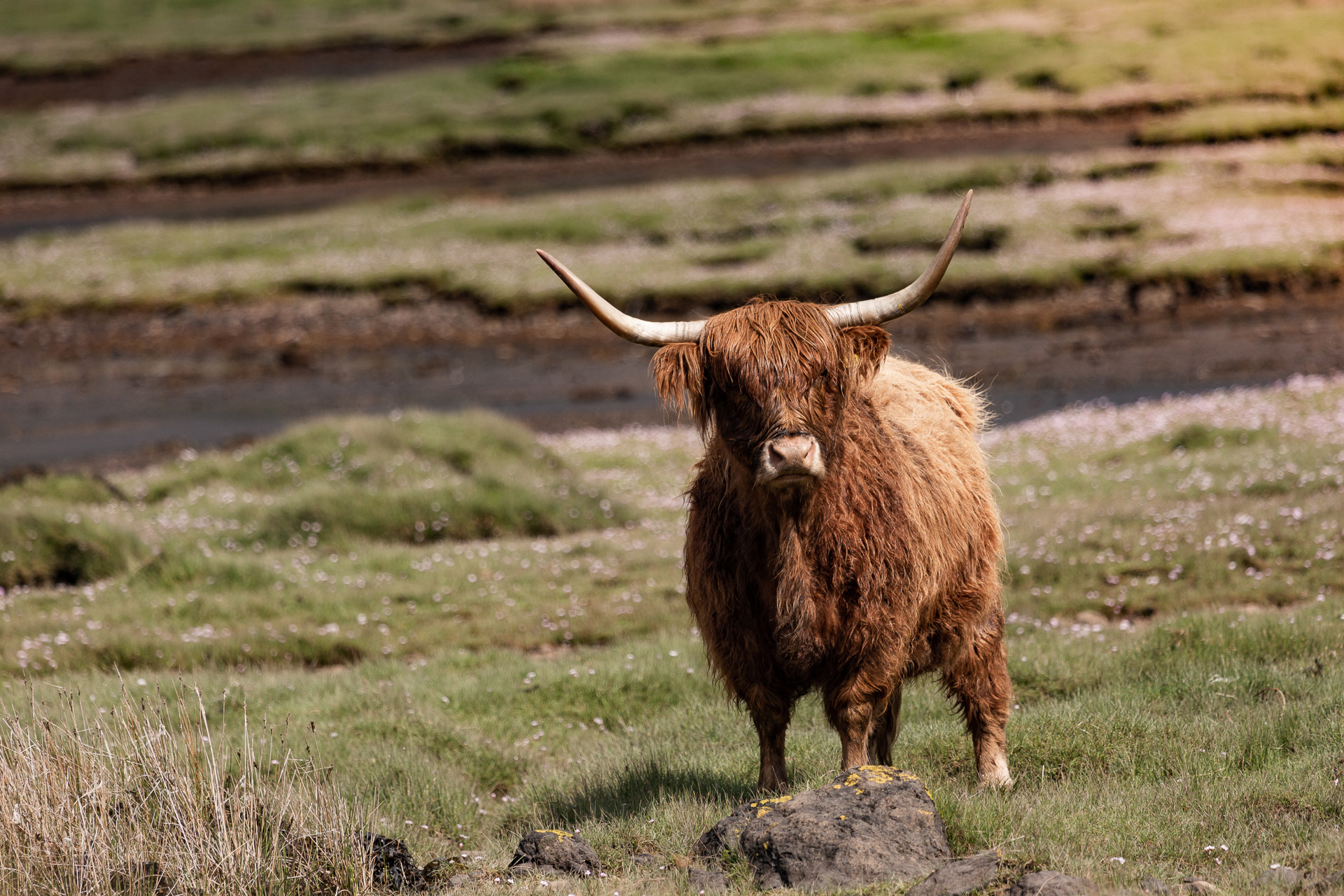
Benbecula is a gem in the heart of the Outer Hebrides, and while it can often be overlooked in favour of it’s neighbours, the island boasts some spectacular scenery. Explore the rugged landscape by hiking or cycling through the rolling hills and heather-covered moorland. A highlight of any visit to Benbecula is a climb up the Rueval, the highest point on the island, and on a clear day you can even catch a glimpse of St Kilda in the distance!
Benbecula also has a vibrant arts scene, with galleries showcasing the works of local artists and craftspeople. For those looking for an outdoor adventure, Benbecula is the perfect destination for getting out on the water. Tall ship Blue Clipper is a regular visitor to this Isle, and her onboard kayaks are perfect for exploring the coastline up close.
Eriskay
The captivating Isle of Eriskay lies in the Southern part of the Outer Hebrides, and is connected to South Uist by a causeway. The island is the namesake of the indigenous Eriskay ponies, a unique Hebridean breed now at risk of extinction. There’s no shortage of adventures to be had, you can explore the ruins of the Eriskay Causeway or sip a pint at the famous Am Politician Bar, where whisky smugglers once plotted their heists! For those visiting the isle on a sailing holiday to the Outer Hebrides, the waters surrounding Eriskay offer calm and sheltered conditions, making it an ideal destination for beginners and experienced sailors alike.
Mingulay
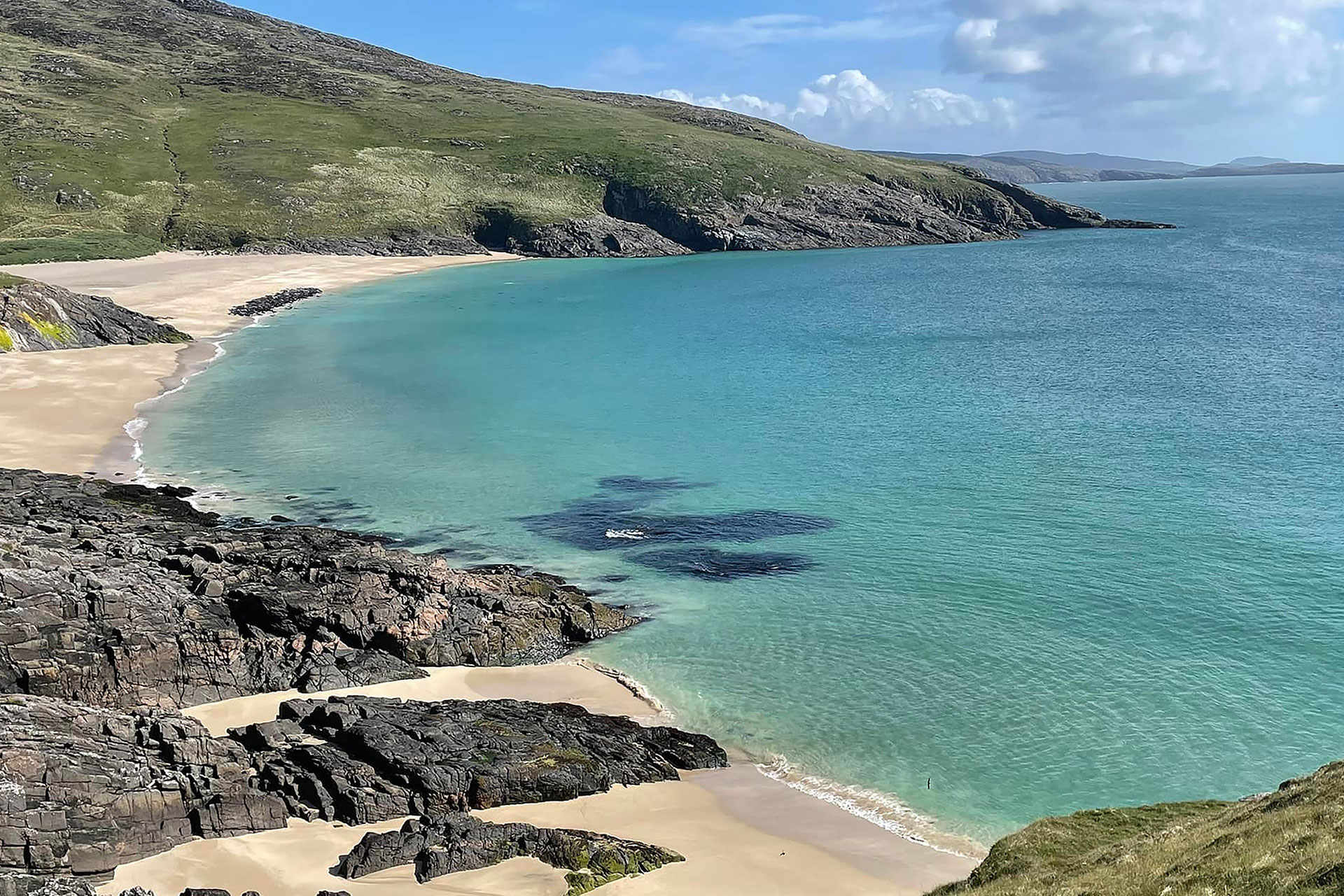
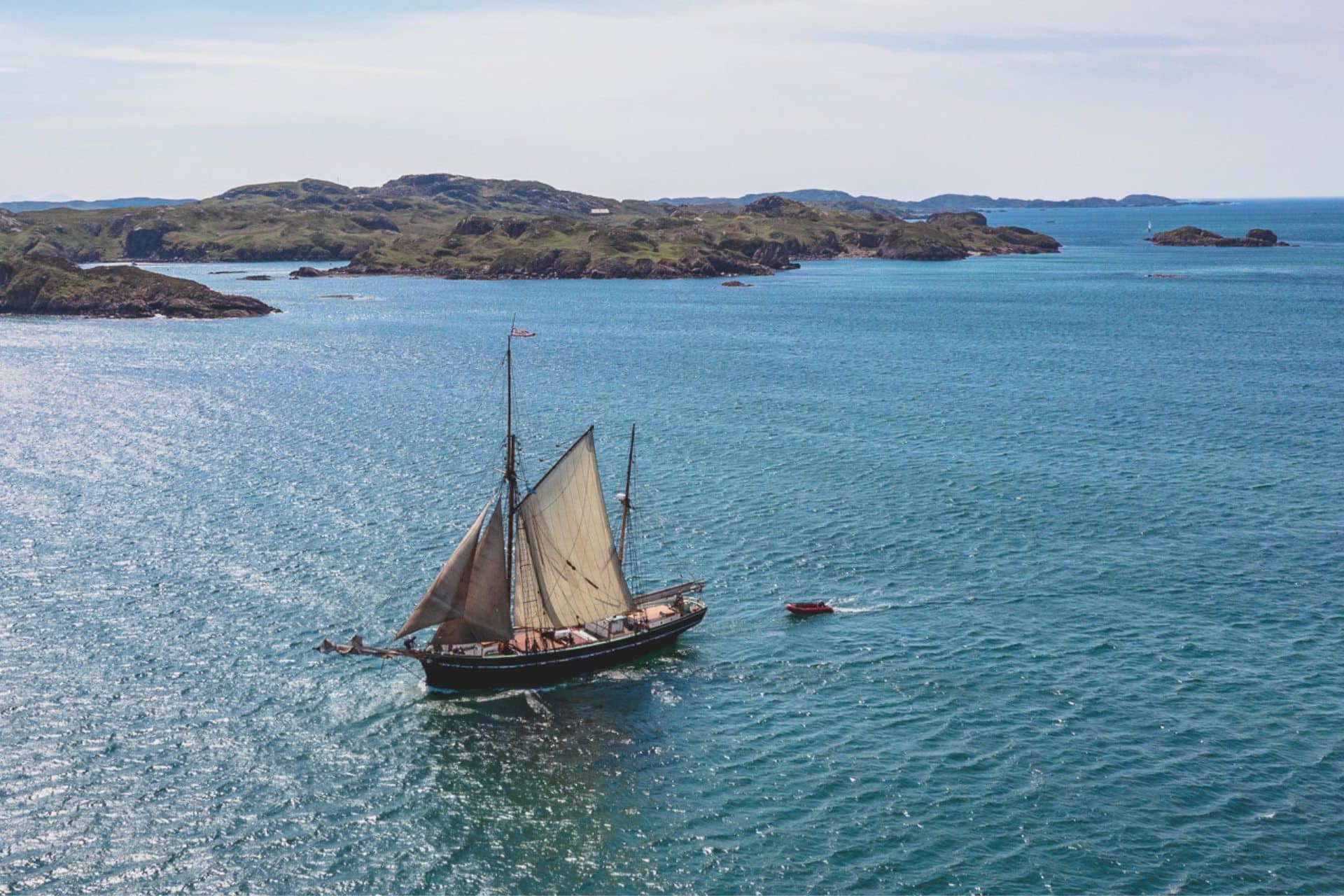
A favourite island of historic tall ship Bessie Ellen, even reaching the isle of Mingulay is an adventure in itself! Located on the southern tip of the Outer Hebrides lies this deserted island. Once home to a tight-knit community, the last inhabitants left over 100 years ago, leaving behind a haunting reminder of a way of life lost to the elements. As you approach the island, the towering 250-metre Carnan cliffs loom over you, providing a protected breeding ground for a plethora of birdlife. From puffins to razorbills, guillemots to oystercatchers, important seabird populations thrive in this wild and rugged landscape.
The Monach Isles
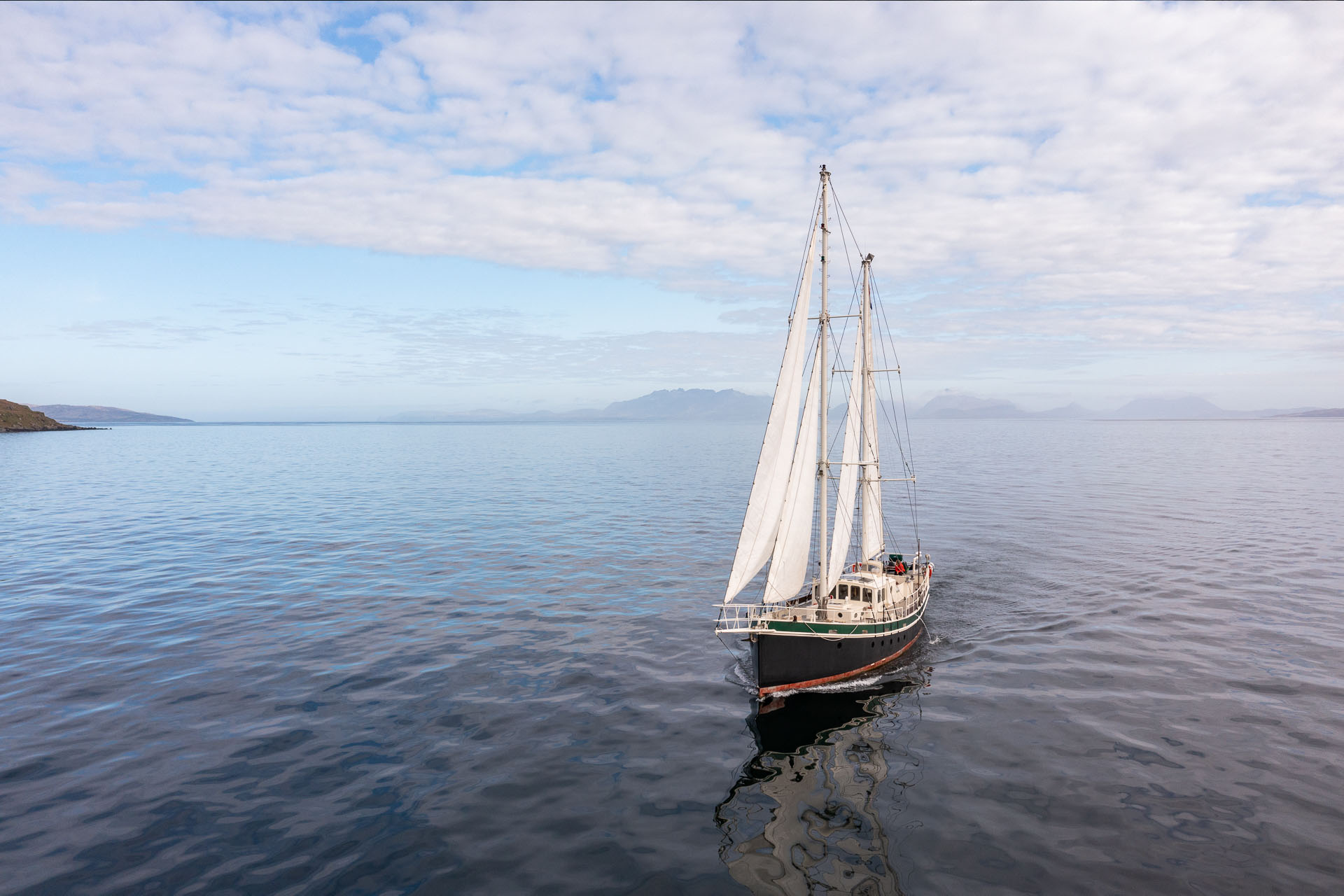
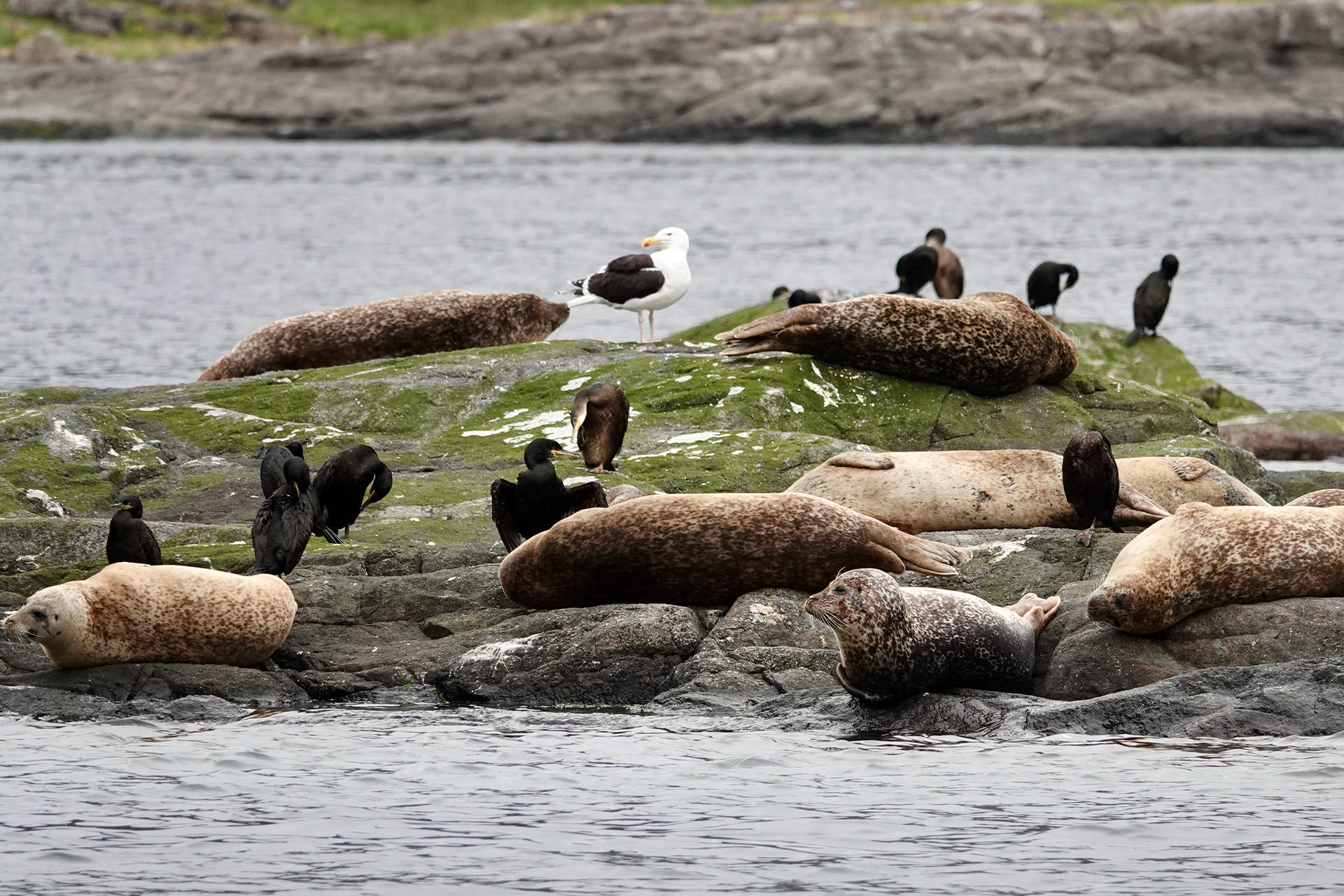
A cluster of low lying islands just off the west coast of North Uist, the Monach Isles are truly a step off the beaten path. Wild and uninhabited, they form part of a National Nature Reserve. Explore the undisturbed machair, a rare carpet of wildflowers, and the large grey seal colony that calls these islands home. With over 10,000 seals gathering here each autumn to mate and give birth, the Monach Isles boast one of the largest colonies in the world. And that’s not all – the islands also host a diverse range of nesting seabirds and a rich flora. Grey herons even make use of the abandoned buildings as nesting sites. Dutch ketch Steady is a regular visitor to the Monach Isles, where nature and history truly intertwine to create an unforgettable experience.
Visit the Outer Hebrides
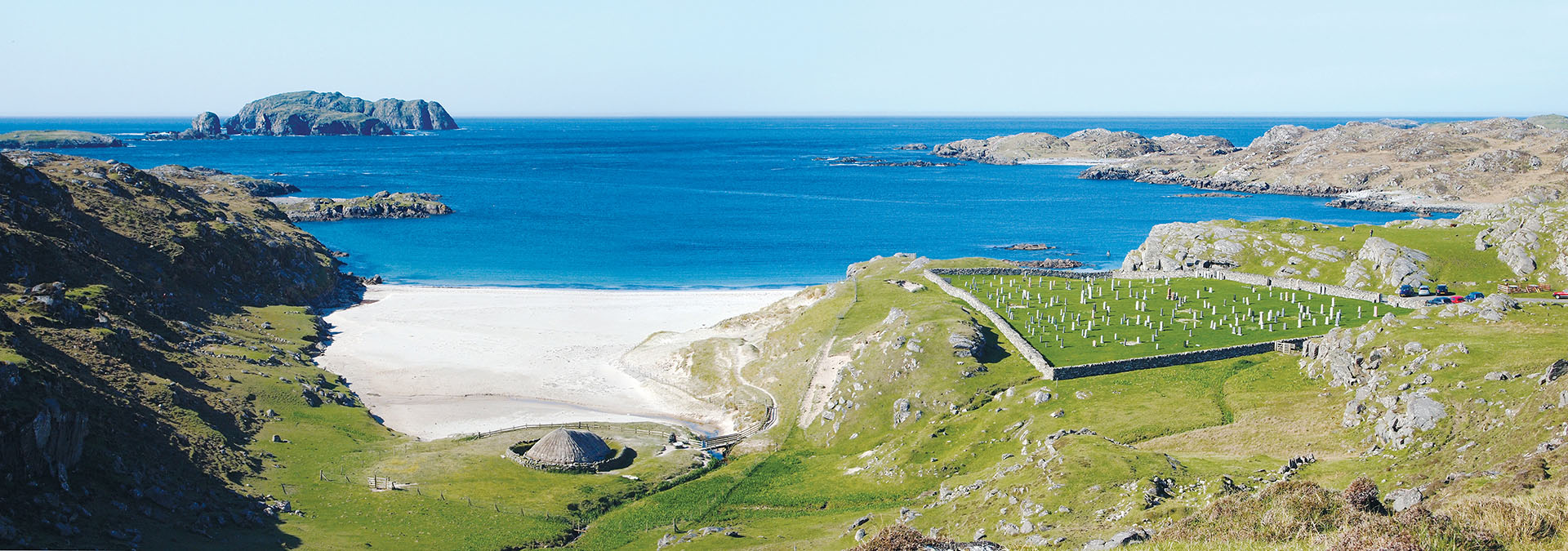
Visiting these magical islands on a skippered sailing holiday is the only way to truly experience each island at your own leisure, and whether you’re a beginner or an experienced sailor, the islands of the Outer Hebrides offer a range of conditions to suit all. From the pristine beaches of Barra to the rugged landscapes of the Monach Islands, the islands of the Outer Hebrides offer a truly unforgettable sailing experience. Join us on a sailing holiday to the Outer Hebrides to discover the diverse beauty of this remote and unspoiled corner of Scotland.

